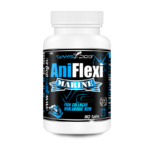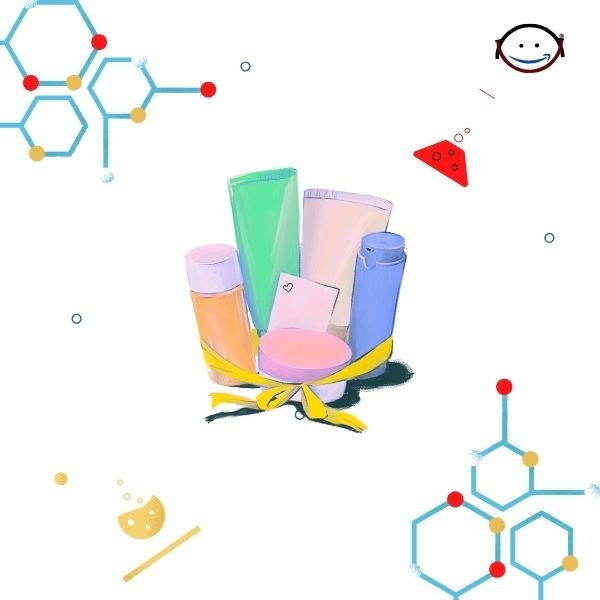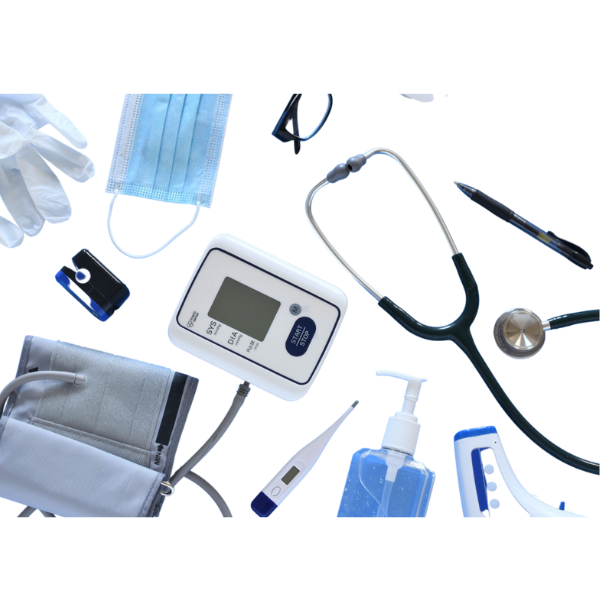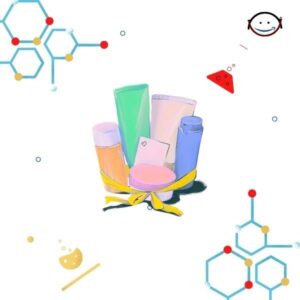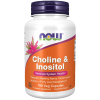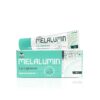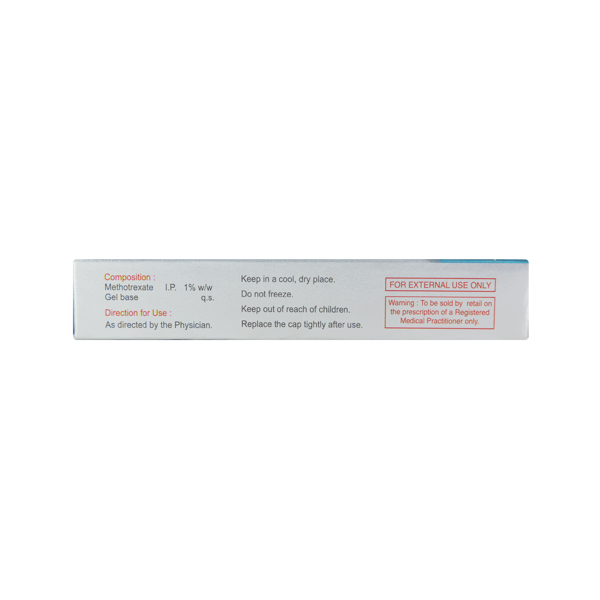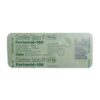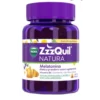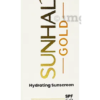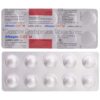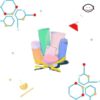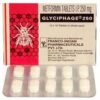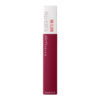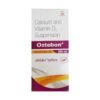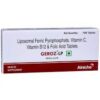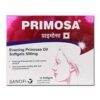-
Now Foods Choline & Inositol 500mg, 100 Veg Capsules ₦41,600.00 QTY: 1
-
MELALUMIN LIP LIGHTENER ( 10g ) ₦2,600.00 QTY: 1
-
Dermotrex Gel 30gm ₦47,600.00 QTY: 1
-
FERTOMID 100MG TABLET ₦1,499.75 QTY: 2
-
ACIVIR DT 400MG TAB 5`S ₦3,071.25 QTY: 1
-
CoeNAC Ab Tablet 10?s ₦37,400.00 QTY: 1
-
ZZZQUIL NATURA MANGO & BAN30PAST ₦19,722.00 QTY: 1
-
Sunhalt gold hydrating sunscreen spf 50 PA+++ (60gm) ₦40,400.00 QTY: 1
-
ALKEPIN ODT 50MG TAB 10`S ₦1,230.00 QTY: 1
-
ARVAST 15 MG TAB 10`S ₦4,820.50 QTY: 2
-
GLYCIPHAGE 250MG STRIP OF 10 TABLETS ₦280.50 QTY: 1
-
Maybelline Super Stay Matte Ink Liquid Lipstick 115 Founder 5 mL ₦31,720.00 QTY: 1
-
REGAPHYLLINE Injection 2ml ₦23,800.00 QTY: 2
-
MATNIB 100mg Tablet 10?s ₦73,100.00 QTY: 1
-
OSTEBON SUSP 200ML ₦1,709.75 QTY: 1
-
GEROZ LP TABLET 10?S ₦5,156.25 QTY: 1
-
2 B12 CAP 15`S ₦5,921.50 QTY: 1
-
Augmentin 625mg 14 Tablets ₦20,000.00 QTY: 1
-
PRIMOSA 500MG PRIMROSE OIL CAPSULES STRIP OF 15 ₦6,476.25 QTY: 1
Customer matched zone "Lagos Delivery Options"
Sort by:
225–240 of 4627 Results
-
SaleArofrez 2.5 mgArofrez 2.5 mg is indicated for the first-line treatment of advanced/metastatic breast cancer (hormone receptor positive or receptor status unknown) in post-menopausal women.Theropeutic ClassHormonal ChemotherapyPharmacologyArofrez 2.5 mg is a nonsteroidal aromatase inhibitor. It inhibits the conversion of androgen to estrogen. In contrast to ovariectomy, treatment with Arofrez 2.5 mg does not lead to an increase in serum FSH. Arofrez 2.5 mg selectively inhibits gonadal steroidogenesis but has no significant effect on adrenal mineralocorticoid or glucocorticoid synthesis. Arofrez 2.5 mg inhibits the aromatase enzyme by competitively binding to the heme of the cytochrome P450 subunit of the enzyme, resulting in a reduction of estrogen biosynthesis in all tissues. Treatment of women with Arofrez 2.5 mg significantly lowers serum estrone, estradiol and estrone sulfate and has not been shown to significantly affect the adrenal corticosteroid synthesis, ldosterone synthesis, or synthesis of thyroid hormones.Dosage & Administration of Arofrez 2.5 mgThe recommended dose is one 2.5 mg tablet administered once a day, regardless to meals. In patients with advanced disease, treatment with Arofrez 2.5 mg Tablet should be continued until tumor progression is evident.? Treatment should be discontinued at tumor relapse. No dose adjustment is required for elderly patients. Patients treated with Arofrez 2.5 mg Tablet do not require glucocorticoid or mineralocorticoid replacement therapy.Dosage of Arofrez 2.5 mgThe recommended dose of Arofrez 2.5 mg is 2.5 mg once daily. Treatment with Arofrez 2.5 mg should continue as long as tumor response is seen. The drug should be discontinued if tumor stops responding as judged by tumor progression. For elderly patients, no modification of the normal adult dosage regimen is necessary. No dosage adjustment is required for patients with mild to moderate hepatic impairment or renal impairment.Interaction of Arofrez 2.5 mgClinical interaction studies with cimetidine and warfarin indicated that the co-administration of Arofrez 2.5 mg with these drugs does not result in clinically significant drug reactions, even through cimetidine is a known inhibitor of one of the cytochrome P450 isoenzymes capable of metabolising Arofrez 2.5 mg in vitro.ContraindicationsArofrez 2.5 mg is contraindicated in known or suspected hypersensitivity to Arofrez 2.5 mg, other aromatase inhibitors, or to any of their ingredients. It is contraindicated during pregnancy, lactation and in pre-menopausal women. It is also contraindicated in severe hepatic dysfunction.Side Effects of Arofrez 2.5 mgAdverse events associated with Arofrez 2.5 mg are generally mild to moderate and rarely severe enough to require discontinuation. Many can be attributed to either the underlying disease or the normal pharmacological consequence of oestrogen deprivation (hot flushes, hair thinning). The most frequently reported adverse events are musculoskeletal pain, arthralgia, headache, fatigue, nausea, dyspnoea, peripheral oedema, coughing, constipation, vomiting, chest pain, viral infection, diarrhoea, rash, abdominal pain, dyspepsia and anorexia. Dizziness, weight increase and pruritus are less commonly seen.Pregnancy & LactationPregnancy Category D. It is not known if Arofrez 2.5 mg is excreted in human milk. Because many drugs are excreted in human milk, caution should be exercised when Arofrez 2.5 mg is administered to a nursing woman.Precautions & WarningsIn breast cancer patients with moderate hepatic dysfunction, no dosage adjustment is necessary, but caution is recommended since Arofrez 2.5 mg elimination depends mainly on intrinsic metabolic clearance. Renal impairment (calculated creatinine clearance: 20 to 50 ml/min) did not affect steady-state plasma Arofrez 2.5 mg concentration at a dose of 2.5 mg or 5 mg. Hence, no dose adjustment is necessary for such renal function impairment. It is anticipated that Arofrez 2.5 mg could be removed from blood by dialysis since it is weakly bound to plasma proteins. The potential risks and benefits to such patients should be considered carefully before prescribing Arofrez 2.5 mg. In some cases, fatigue and dizziness have been observed with the use of Arofrez 2.5 mg. Patients should therefore, be advised that their physical and/or mental abilities required for operating machinery or driving a car may be impaired.Overdose Effects of Arofrez 2.5 mgThere is no clinical experience of overdosage. There is no specific antidote to Arofrez 2.5 mg. Since Arofrez 2.5 mg is not highly protein-bound, dialysis may be helpful. Emesis may be induced if the patient is alert. In general, supportive care and frequent monitoring of vital signs is appropriate.Storage ConditionsKeep below 30?C temperature, away from light & moisture. Keep out of the reach of children.Use In Special PopulationsRenal Impairment:?No dosage adjustment is required for patients with renal impairment if creatinine clearance is 10 ml/min.Hepatic Impairment:?No dosage adjustment is recommended for patients with mild to moderate hepatic impairment. The dose of Arofrez 2.5 mg?in patients with cirrhosis and severe hepatic dysfunction should be reduced by 50%. The recommended dose for such patients is 2.5 mg administered every other day.Pediatric Use:?The safety and effectiveness in pediatric patients have not been established.Drug ClassesHormonal ChemotherapyMode Of ActionMechanism of Action: Arofrez 2.5 mg is a potent and highly specific nonsteroidal aromatase inhibitor. It inhibits the aromatase enzyme by competitively binding to the haem of the cytochrome P450 subunit of the enzyme, resulting in a reduction of estrogen biosynthesis in all tissues. Arofrez 2.5 mg exerts its antitumor effect by depriving estrogen-dependent breast cancer cells of their growth stimulus. In postmenopausal women, estrogens are derived mainly from the action of the aromatase enzyme, which coverts adrenal androgens primarily androstenedione and testosterone-to oestrone (E1) and oestradiol (E2). The suppression of estrogen biosynthesis in the peripheral tissues and the malignant tissues can be achieved by specifically inhibiting the aromatase enzyme.In healthy postmenopausal women, single doses of 0.1, 0.5 and 2.5mg Arofrez 2.5 mg suppress serum oestrone and oestradiol by 75-78% and 78% from baseline respectively. Maximum suppression is achieved in 48-78 hours. In post-menopausal patients, with advanced breast cancer, daily doses of 0.1 to 5mg suppress plasma concentration of oestradiol, oestrone, and oestrone sulphate by 78-95% from baseline in all patients treated. Arofrez 2.5 mg had no effect on plasma androgen concentrations (androstenedione and testosterone) among healthy postmenopausal women after single doses of 0.1, 0.5 and 2.5mg indicating that the blockade of estrogen biosynthesis does not lead to accumulation of androgenic precursors. Impairment of adrenal steroidogenesis has not been observed.Pharmacokinetics: Arofrez 2.5 mg is rapidly and completely absorbed from the gastrointestinal tract (absolute bioavailability 99.9%). Food slightly decreases the rate of absorption, but the extent of absorption remains unchanged. The minor effect of the absorption rate is not considered to be of clinical relevance and therefore Arofrez 2.5 mg may be taken after, with or before food. Plasma protein binding of Arofrez 2.5 mg is approximately 60%, mainly to albumin (55%). The concentration of Arofrez 2.5 mg in erythrocytes is about 80% of that in plasma. Metabolic clearance to a pharmacologically inactive carbinol metabolite is the major elimination pathway of Arofrez 2.5 mg but is relatively slow when compared to hepatic blood flow. The cytochrome P450 isoenzymes 3A4 and 2A6 were found to be capable of converting Arofrez 2.5 mg to this metabolite in vitro but their individual contributions to Arofrez 2.5 mg metabolism in vivo have not been established. The apparent terminal elimination half-life in plasma is about 2 days. After daily administration of 2.5mg of Arofrez 2.5 mg, steady-state levels are reached within 2 to 6 weeks.PregnancyOral administration of Arofrez 2.5 mg in pregnant rats resulted in teratogenicity and maternal toxicity at 0.03 mg/kg. Embryotoxicity and foetotoxicity were seen at doses >0.003 mg/kg and there was an increase in the incidence of foetal malformation among the animals treated. However, there are no adequate and well-controlled studies of Arofrez 2.5 mg in pregnant women and its use in these patients is not recommended. It is not known whether Arofrez 2.5 mg is excreted in human milk. Because many drugs are excreted in human milk, Arofrez 2.5 mg should not be administered to a nursing woman.Sku: 1736097530-1528
Arofrez2.5 mg
₦22,000.00Original price was: ₦22,000.00.₦20,240.00Current price is: ₦20,240.00.₦22,000.00Original price was: ₦22,000.00.₦20,240.00Current price is: ₦20,240.00. Add to basket Quick View -
SaleArotide 50 mcg+250 mcgThis is indicated in the regular treatment of asthma where use of a combination product (long-acting ?2-agonist and inhaled corticosteroid) is appropriate: patients not adequately controlled with inhaled corticosteroids and 'as needed' inhaled short acting ?2-agonist or patients already adequately controlled on both inhaled corticosteroid and long-acting ?2-agonist. Theropeutic ClassLong-acting selective ?-adrenoceptor stimulants, Respiratory corticosteroidsPharmacologySalmeterol Xinafoate is a selective, long acting beta-2 agonist used in the treatment of asthma and other forms of diffuse airways obstruction. Fluticasone Propionate is a corticosteroid with mainly glucocorticoid activity. Fluticasone Propionate is stated to exert a topical effect on the lungs without systematic effects at usual dose. Salmeterol protects against symptoms, Fluticasone Propionate improves lung function and prevents exacerbations of the condition. This preparation can offer a more convenient regime for patients on concurrent ?-agonist and inhaled corticosteroid therapy. The respective mechanisms of action of both drugs are discussed below:Salmeterol: Salmeterol is a selective long-acting (12 hour) beta-2-adrenoceptor agonist with a long side chain which binds to the exo-site of the receptor.Fluticasone Propionate: Fluticasone Propionate given by inhalation at recommended doses has a potent glucocorticoid anti-inflammatory action within the lungs, resulting in reduced symptoms and exacerbaions of asthma, without the adverse effects observed when corticosteroids are administered systemically.Dosage & Administration of Arotide 50 mcg+250 mcgInhalation Aerosol: Adults and adolescents 12 years and older: 2 puffs of 25 ?g Salmeterol and 50 ?g Fluticasone Propionate twice daily or 2 puffs of 25 ?g Salmeterol and 125 ?g Fluticasone Propionate twice daily or 2 puffs of 25 ?g Salmeterol and 250 ?g Fluticasone Propionate twice daily. Children (4-12 years): 2 puffs of 25 ?g salmeterol and 50 ?g Fluticasone Propionate twice daily. Inhalation Powder in Capsule (For Asthma): Adult and Adolescent (12 Years and Older): Salmeterol 50 ?g & Fluticasone 100 ?g or?Salmeterol?50 ?g & Fluticasone 250 ?g twice daily (morning and evening, approximately 12 hours apart).? The recommended starting dosages for?Salmeterol?50 ?g & Fluticasone?100 ?g &?Salmeterol?50 ?g & Fluticasone 250 ?g for patients aged 12 years and older are based upon patients asthma severity.? The maximum recommended dosage is?Salmeterol?50 ?g & Fluticasone 500 ?g twice daily. Pediatric Patients (4 to 11 Years): For patients with asthma who are not controlled on an inhaled corticosteroid, the dosage is Salmeterol?50 ?g & Fluticasone?100 ?g twice daily (morning and evening, approximately 12 hours apart). Inhalation Powder in Capsule (For COPD): Salmeterol 50 ?g & Fluticasone 250 ?g twice daily (morning and evening, approximately 12 hours apart). Rinsing the mouth after each inhalation is advised.Inhalation Powder in Maxhaler (For Asthma): This is a moulded plastic device containing a foil strip with 60 regularly placed blisters containing pre-dispensed inhalation powder. Patients should be made aware that Maxhaler must be used daily for optimum benefit, even when asymptomatic.Adults and Adolescents (12 years and older)- 50/100 Maxhaler: One Inhalation twice daily 50/250 Maxhaler: One Inhalation twice daily 50/500 Maxhaler: One Inhalation twice daily Children (4 years and older)- 50/100 Maxhaler: One Inhalation twice daily. The maximum licensed dose of fluticasone propionate delivered by this Maxhaler in children is 100 ug twice daily. There are no data available for use of this Maxhaler in children aged under 4 years. Inhalation Powder in Maxhaler (For COPD): Maxhaler: One Inhalation twice daily Special patient groups: There is no need to adjust the dose in elderly patients or in those with renal impairment. There are no data available for use of this in patients with hepatic impairment. Using the Maxhaler: This is a patient friendly, ready to use and easy to grip device. Use as per instructions for use. Dosage of Arotide 50 mcg+250 mcgInhaler: Adults and adolescents 12 years and older: 2 puffs of 25 ?g Salmeterol and 50 ?g Fluticasone Propionate twice daily or 2 puffs of 25 ?g Salmeterol and 125 ?g Fluticasone Propionate twice daily or 2 puffs of 25 ?g Salmeterol and 250 ?g Fluticasone Propionate twice daily. Children (4-12 years): 2 puffs of 25 ?g salmeterol and 50 ?g Fluticasone Propionate twice daily. Inhalation capsule (for asthma): Adult and Adolescent (12 Years and Older): Salmeterol 50 ?g & Fluticasone 100 ?g or?Salmeterol?50 ?g & Fluticasone 250 ?g twice daily (morning and evening, approximately 12 hours apart).? The recommended starting dosages for?Salmeterol?50 ?g & Fluticasone?100 ?g &?Salmeterol?50 ?g & Fluticasone 250 ?g for patients aged 12 years and older are based upon patients asthma severity.? The maximum recommended dosage is?Salmeterol?50 ?g & Fluticasone 500 ?g twice daily. Pediatric Patients (4 to 11 Years): For patients with asthma who are not controlled on an inhaled corticosteroid, the dosage is Salmeterol?50 ?g & Fluticasone?100 ?g twice daily (morning and evening, approximately 12 hours apart). Inhalation capsule (For COPD): Salmeterol 50 ?g & Fluticasone 250 ?g twice daily (morning and evening, approximately 12 hours apart). Rinsing the mouth after each inhalation is advised.Maxhaler (For Asthma): This is a moulded plastic device containing a foil strip with 60 regularly placed blisters containing pre-dispensed inhalation powder. Patients should be made aware that inhaler must be used daily for optimum benefit, even when asymptomatic.Adults and Adolescents (12 years and older)- 50/100 inhaler: One Inhalation twice daily 50/250 inhaler: One Inhalation twice daily 50/500 inhaler: One Inhalation twice daily Children (4 years and older)- 50/100 inhaler: One Inhalation twice daily. The maximum licensed dose of fluticasone propionate delivered by this inhaler in children is 100 mcg twice daily. There are no data available for use of this inhaler in children aged under 4 years. Maxhaler (For COPD): Inhaler: One Inhalation twice daily Special patient groups: There is no need to adjust the dose in elderly patients or in those with renal impairment. There are no data available for use of this in patients with hepatic impairment. Using the inhaler: This is a patient friendly, ready to use and easy to grip device. Use as per instructions for use. Administration of Arotide 50 mcg+250 mcgUsing an Inhaler seems simple, but most patients do not know how to use it in the right way. If the Inhaler is used in the wrong way, less medicine can reach the lungs. Correct and regular use of the Inhaler will prevent or lessen the severity of asthma attacks.Following simple steps can help to use Inhaler effectively (According to "National Asthma Guidelines for Medical Practitioners" published by Asthma Association): Take off the cap. Shake the inhaler (at least six times) vigorously before each use. If the inhaler is new or if it has not been used for a week or more, shake it well and release one puff into the air to make sure that it works. Breathe out as full as comfortably possible & hold the inhaler upright. Place the actuator into mouth between the teeth and close lips around the mouthpiece. While breathing deeply and slowly through the mouth, press down firmly add fully on the canister to release medicine. Remove the inhaler from mouth. Continue holding breath for at least for 10 seconds or as long as it is comfortable. If doctor has prescribed more than one inhalation per treatment, wait 1 minute between puffs (inhalations). Shake the inhaler well and repeat steps 4 to 7. After use, replace the cap on the mouthpiece. After each treatment, rinse mouth with water. Check your technique in front of a mirror from time to time, if you see a white mist during the inhalation, you may not have closed your lips properly around mouthpiece, or you may not be breathing in as you press the can. This indicates failure of technique. If this happens, repeat the procedure from step 4 carefully. Instructions for Cleaning Inhaler: Clean your Inhaler at least once a week. Remove canister and rinse the plastic actuator and cap in warm water but do not put the metal canister into water. Dry the actuator and cap thoroughly and gently replace the metal canister into the actuator with a twisting motion. Put the cap on the mouthpiece.Interaction of Arotide 50 mcg+250 mcgBoth non-selective and selective ?-blockers should be avoided in patients with asthma, unless there are compelling reasons for their use. Due to the very low plasma concentrations achieved after inhaled dosing clinically significant drug interactions are unlikely. Care should be taken when co-administering known strong CYP3A4 inhibitors (e.g. ketoconazole, ritonavir), as there is potential for increased systemic exposure to Fluticasone Propionate.ContraindicationsThis is contraindicated in patients with a history of hypersensitivity to any of the ingredients.Side Effects of Arotide 50 mcg+250 mcgAs this preparation contains Salmeterol and Fluticasone Propionate, the type and severity of adverse reactions associated with each of the compounds may be expected. There is no incidence of additional adverse events following concurrent administration of the two compounds. Adverse events, which have been associated with Salmeterol or Fluticasone Propionate, are given below.Salmeterol: The pharmacological side effects of beta-2-agonist treatment, such as tremor, subjective palpitations and headache, have been reported, but tend to be transient and reduce with regular therapy. Cardiac arrhythmia (including atrial fibrillation, supraventricular tachycardia and extra systoles) may occur, usually in susceptible patients. There have been reports of arthralgia and hypersensitivity reactions, including rash, oedema and angioedema. There have been reports of oropharyngeal irritation. There have been rare reports of muscle cramps.Fluticasone propionate: Hoarseness and candidiasis (thrush) of the mouth and throat can occur in some patients. Cutaneous hypersensitivity reactions have been reported. Rare cases of facial and oropharyngeal oedema have been reported. Both hoarseness and incidence of candidiasis may be relieved by gargling with water after use of Salmeterol/ Fluticasone Propionate Inhaler.Pregnancy & LactationAdministration of drugs during pregnancy and lactation should only be considered if the expected benefit to the mother is greater than any possible risk to the foetus or child. There is insufficient experience of the use of Salmeterol Xinafoate and Fluticasone Propionate in human pregnancy and lactation. There are no data available for human breast milk.Precautions & WarningsConsideration should be given to additional corticosteroid therapies, and to including administration of antibiotics if an infection is present. As with all inhaled medication containing corticosteroids, this preparation should be administered with caution in patients with active or quiescent pulmonary tuberculosis. This preparation should be administered with caution in patients with thyrotoxicosis.Storage ConditionsPressurised canister, do not puncture, break or incinerate even when apparently empty. Avoid storage in direct sunlight or heat. Store below 30?C. Keep away from eyes. Keep away from children.Use In Special PopulationsOrally inhaled corticosteroids may cause a reduction in growth velocity when administered to paediatric patients. The long-term effects of this reduction including the impact of final adult height are unknown.Drug ClassesLong-acting selective ?-adrenoceptor stimulants, Respiratory corticosteroidsMode Of ActionSalmeterol Xinafoate is a selective, long acting beta-2 agonist used in the treatment of asthma and other forms of diffuse airways obstruction. Fluticasone Propionate is a corticosteroid with mainly glucocorticoid activity. Fluticasone Propionate is stated to exert a topical effect on the lungs without systematic effects at usual dose. Salmeterol protects against symptoms, Fluticasone Propionate improves lung function and prevents exacerbations of the condition. This preparation can offer a more convenient regime for patients on concurrent ?-agonist and inhaled corticosteroid therapy. The respective mechanisms of action of both drugs are discussed below:Salmeterol: Salmeterol is a selective long-acting (12 hour) beta-2-adrenoceptor agonist with a long side chain which binds to the exo-site of the receptor.Fluticasone Propionate: Fluticasone Propionate given by inhalation at recommended doses has a potent glucocorticoid anti-inflammatory action within the lungs, resulting in reduced symptoms and exacerbaions of asthma, without the adverse effects observed when corticosteroids are administered systemically.PregnancyAdministration of drugs during pregnancy and lactation should only be considered if the expected benefit to the mother is greater than any possible risk to the foetus or child. There is insufficient experience of the use of Salmeterol Xinafoate and Fluticasone Propionate in human pregnancy and lactation. There are no data available for human breast milk.Pediatric UsesOrally inhaled corticosteroids may cause a reduction in growth velocity when administered to paediatric patients. The long-term effects of this reduction including the impact of final adult height are unknown.Sku: 1736093367-438
Arotide50 mcg+250 mcg
₦6,600.00Original price was: ₦6,600.00.₦6,006.00Current price is: ₦6,006.00.₦6,600.00Original price was: ₦6,600.00.₦6,006.00Current price is: ₦6,006.00. Add to basket Quick View -
SaleArotril 0.5 mgArotril 0.5 mg serves as a treatment for panic disorder, whether with or without agoraphobia. Panic disorder manifests through unexpected panic attacks and the accompanying worry about experiencing more of these episodes, along with concerns about their implications or consequences.? Additionally, it is indicated for use on its own or as an adjunct in treating Lennox-Gastaut Syndrome (specifically the petit mal variant), akinetic seizures, and myoclonic seizures. It may also be considered for patients with absence seizures (petit mal) who have not responded to succinimides. It's important to note that the long-term effectiveness of the medicine, specifically for durations exceeding 9 weeks, hasn't been comprehensively studied in controlled clinical trials. Therefore, physicians who choose to prescribe Arotril 0.5 mg for extended periods should periodically reassess its long-term suitability for each patient.Theropeutic ClassAdjunct anti-epileptic drugs, Benzodiazepine hypnoticsPharmacologyArotril 0.5 mg works by reducing nerve transmission in the motor cortex, effectively suppressing the spike and wave discharges associated with absence seizures. This mechanism is thought to be linked to its ability to enhance the activity of GABA. In clinical applications, it has proven effective in improving both focal epilepsy and generalized seizures.Dosage & Administration of Arotril 0.5 mgOral Dosage for Adults with Seizure Disorders: Begin with 1.5 mg per day, divided into three doses. Adjust by 0.5-1 mg every three days, up to a maximum of 20 mg per day. Oral Dosage for Adults with Panic Disorder: Start with 0.25 mg twice daily. After three days, increase to 1 mg per day as needed. Pediatric Patients: To minimize drowsiness, infants and children (up to 10 years or 30 kg) should take 0.01-0.03 mg/kg/day, not exceeding 0.05 mg/kg/day, split into multiple doses. Injection Dosage: Children: Administer 0.5 mg via slow IV injection or infusion.? Adults: Use 1 mg via slow IV injection or infusion, with the option to repeat if necessary (typically 1-4 mg).? Ensure a controlled IV rate of 0.25 - 0.5 mg per minute (equivalent to 0.5-1.0 ml of the solution), and do not exceed a total dose of 10 mg.Interaction of Arotril 0.5 mgArotril 0.5 mg does not seem to impact the pharmacokinetics of phenytoin, carbamazepine, or phenobarbital. However, its effect on the metabolism of other drugs remains unexploredContraindicationsAvoid prescribing it to patients with a history of hypersensitivity to benzodiazepines or those showing clinical or biochemical signs of significant liver disease. It can be administered to patients with open-angle glaucoma who are receiving appropriate treatment but should not be used in cases of acute narrow-angle glaucoma.Side Effects of Arotril 0.5 mgThe most commonly observed side effects of Arotril 0.5 mg are related to central nervous system (CNS) depression. Experience in treating seizures has revealed that drowsiness occurs in around 50% of patients, while approximately 30% experience ataxia. In some instances, these effects may diminish over time.? Additionally, behavior problems have been reported in about 25% of patients. Other potential side effects include abnormal eye movements, aphonia, coma, tremor, vertigo, confusion, depression, amnesia, hallucinations, hysteria, increased libido, insomnia, psychosis, and palpitations.Pregnancy & LactationArotril 0.5 mg should be considered during pregnancy only when the potential benefits outweigh the risks to the fetus. It is recommended that women taking the medicine should avoid breastfeeding.Precautions & WarningsWhen administered to patients with multiple coexisting seizure disorders, this medication can potentially raise the occurrence or trigger the onset of generalized tonic-clonic seizures. In such cases, it may be necessary to supplement with suitable anticonvulsants or adjust their dosages accordingly. Combining valproic acid with Arotril 0.5 mg may lead to the development of absence status.Overdose Effects of Arotril 0.5 mgSymptoms: Benzodiazepines commonly result in drowsiness, ataxia, dysarthria, and nystagmus. In cases of Arotril 0.5 mg overdose taken alone, it is rarely life-threatening but may lead to areflexia, apnea, hypotension, cardiorespiratory depression, and coma. Coma, if it occurs, typically lasts a few hours, but it may be more prolonged and cyclical in elderly patients.? Elevated seizure frequency can occur with supratherapeutic plasma concentrations. It's important to note that benzodiazepine-induced respiratory depression poses a greater risk for individuals with respiratory conditions. Additionally, benzodiazepines can amplify the effects of other central nervous system depressants, including alcohol. Treatment: Monitor the patient's vital signs and provide appropriate supportive care based on their clinical condition. Symptomatic treatment for cardiorespiratory and central nervous system effects may be necessary. To prevent further drug absorption, consider timely administration of activated charcoal within 1-2 hours. When using activated charcoal, ensure airway protection for drowsy patients.? Gastric lavage may be considered in cases of mixed ingestion but should not be routine. In cases of severe CNS depression, flumazenil, a benzodiazepine antagonist, may be an option. However, it should be administered under close monitoring due to its short half-life (approximately one hour). Patients given flumazenil will require monitoring after its effects wear off. Use flumazenil with extreme caution when other drugs that lower the seizure threshold (e.g., tricyclic antidepressants) are present. For detailed information on the correct use of flumazenil, refer to the prescribing information.Storage ConditionsKeep in a dry place away from light and heat. Keep out of the reach of children.ReconstitutionFor slow intravenous injection, it's crucial to dilute the vial's contents with 1 ml of water for injection before administering to prevent irritation of the veins. This injection solution should be prepared just before use. During IV injection, it should be administered slowly while continuously monitoring EEG, respiration, and blood pressure. When opting for intravenous infusion, Arotril 0.5 mg (from the vial) can be diluted for infusion at a ratio of 1 vial (1 mg) to at least 85 ml of diluting media. Suitable diluting media options include sodium chloride 0.9%, sodium chloride 0.45% + glucose 2.5%, glucose 5%, or glucose 10%. These mixtures remain stable for 24 hours at room temperature.? If PVC infusion bags are used, the mixture should be infused immediately or within 4 hours. The infusion should not exceed 8 hours. Avoid preparing Arotril 0.5 mg infusions using sodium bicarbonate solution, as it may cause solution precipitation. Intramuscular injection should be reserved for exceptional cases or when IV administration is not possible.Drug ClassesAdjunct anti-epileptic drugs, Benzodiazepine hypnoticsMode Of ActionArotril 0.5 mg shares pharmacological properties common to benzodiazepines, encompassing anticonvulsive, sedative, muscle-relaxing, and anxiolytic effects. The central actions of benzodiazepines involve enhancing GABAergic neurotransmission at inhibitory synapses. In the presence of benzodiazepines, the GABA receptor's affinity for the neurotransmitter is boosted through positive allosteric modulation, resulting in an increased impact of released GABA on the postsynaptic transmembrane chloride ion flux. Animal studies also indicate that this pill may affect serotonin. Both animal data and electroencephalographic investigations in humans have demonstrated that Arotril 0.5 mg rapidly suppresses various forms of paroxysmal activity, including spike and wave discharges in absence seizures (petit mal), slow spike waves, generalized spike waves, spikes with temporal or other locations, as well as irregular spikes and waves. Generalized EEG abnormalities are more consistently suppressed than focal abnormalities. Based on these findings, Arotril 0.5 mg offers beneficial effects in both generalized and focal epilepsies.Pediatric UsesPediatric Use: In infants and young children, the use of this medication may lead to increased saliva and bronchial secretions. Therefore, it's essential to ensure clear airways. Geriatric Use: Elderly patients may experience more pronounced benzodiazepine effects compared to younger individuals, even with similar plasma benzodiazepine concentrations. This heightened sensitivity may result from age-related changes in drug-receptor interactions, post-receptor mechanisms, and organ function. Renal Impairment: Renal issues do not affect the pharmacokinetics of this medication, necessitating no dosage adjustment for patients with kidney impairment. Hepatic Impairment: In cirrhotic patients, the plasma protein binding of this medication significantly differs from that in healthy subjects, with a higher free fraction (17.1?1.0% vs. 13.9?0.2%). Although hepatic impairment's influence on Arotril 0.5 mg pharmacokinetics hasn't been extensively studied, experience with a closely related nitrobenzodiazepine (nitrazepam) suggests that the clearance of unbound Arotril 0.5 mg may be reduced in liver cirrhosis cases.Sku: 1736106197-4075
Arotril0.5 mg
₦385.00Original price was: ₦385.00.₦350.35Current price is: ₦350.35. -
SaleArotril 1 mgArotril 1 mg serves as a treatment for panic disorder, whether with or without agoraphobia. Panic disorder manifests through unexpected panic attacks and the accompanying worry about experiencing more of these episodes, along with concerns about their implications or consequences.? Additionally, it is indicated for use on its own or as an adjunct in treating Lennox-Gastaut Syndrome (specifically the petit mal variant), akinetic seizures, and myoclonic seizures. It may also be considered for patients with absence seizures (petit mal) who have not responded to succinimides. It's important to note that the long-term effectiveness of the medicine, specifically for durations exceeding 9 weeks, hasn't been comprehensively studied in controlled clinical trials. Therefore, physicians who choose to prescribe Arotril 1 mg for extended periods should periodically reassess its long-term suitability for each patient.Theropeutic ClassAdjunct anti-epileptic drugs, Benzodiazepine hypnoticsPharmacologyArotril 1 mg works by reducing nerve transmission in the motor cortex, effectively suppressing the spike and wave discharges associated with absence seizures. This mechanism is thought to be linked to its ability to enhance the activity of GABA. In clinical applications, it has proven effective in improving both focal epilepsy and generalized seizures.Dosage & Administration of Arotril 1 mgOral Dosage for Adults with Seizure Disorders: Begin with 1.5 mg per day, divided into three doses. Adjust by 0.5-1 mg every three days, up to a maximum of 20 mg per day. Oral Dosage for Adults with Panic Disorder: Start with 0.25 mg twice daily. After three days, increase to 1 mg per day as needed. Pediatric Patients: To minimize drowsiness, infants and children (up to 10 years or 30 kg) should take 0.01-0.03 mg/kg/day, not exceeding 0.05 mg/kg/day, split into multiple doses. Injection Dosage: Children: Administer 0.5 mg via slow IV injection or infusion.? Adults: Use 1 mg via slow IV injection or infusion, with the option to repeat if necessary (typically 1-4 mg).? Ensure a controlled IV rate of 0.25 - 0.5 mg per minute (equivalent to 0.5-1.0 ml of the solution), and do not exceed a total dose of 10 mg.Interaction of Arotril 1 mgArotril 1 mg does not seem to impact the pharmacokinetics of phenytoin, carbamazepine, or phenobarbital. However, its effect on the metabolism of other drugs remains unexploredContraindicationsAvoid prescribing it to patients with a history of hypersensitivity to benzodiazepines or those showing clinical or biochemical signs of significant liver disease. It can be administered to patients with open-angle glaucoma who are receiving appropriate treatment but should not be used in cases of acute narrow-angle glaucoma.Side Effects of Arotril 1 mgThe most commonly observed side effects of Arotril 1 mg are related to central nervous system (CNS) depression. Experience in treating seizures has revealed that drowsiness occurs in around 50% of patients, while approximately 30% experience ataxia. In some instances, these effects may diminish over time.? Additionally, behavior problems have been reported in about 25% of patients. Other potential side effects include abnormal eye movements, aphonia, coma, tremor, vertigo, confusion, depression, amnesia, hallucinations, hysteria, increased libido, insomnia, psychosis, and palpitations.Pregnancy & LactationArotril 1 mg should be considered during pregnancy only when the potential benefits outweigh the risks to the fetus. It is recommended that women taking the medicine should avoid breastfeeding.Precautions & WarningsWhen administered to patients with multiple coexisting seizure disorders, this medication can potentially raise the occurrence or trigger the onset of generalized tonic-clonic seizures. In such cases, it may be necessary to supplement with suitable anticonvulsants or adjust their dosages accordingly. Combining valproic acid with Arotril 1 mg may lead to the development of absence status.Overdose Effects of Arotril 1 mgSymptoms: Benzodiazepines commonly result in drowsiness, ataxia, dysarthria, and nystagmus. In cases of Arotril 1 mg overdose taken alone, it is rarely life-threatening but may lead to areflexia, apnea, hypotension, cardiorespiratory depression, and coma. Coma, if it occurs, typically lasts a few hours, but it may be more prolonged and cyclical in elderly patients.? Elevated seizure frequency can occur with supratherapeutic plasma concentrations. It's important to note that benzodiazepine-induced respiratory depression poses a greater risk for individuals with respiratory conditions. Additionally, benzodiazepines can amplify the effects of other central nervous system depressants, including alcohol. Treatment: Monitor the patient's vital signs and provide appropriate supportive care based on their clinical condition. Symptomatic treatment for cardiorespiratory and central nervous system effects may be necessary. To prevent further drug absorption, consider timely administration of activated charcoal within 1-2 hours. When using activated charcoal, ensure airway protection for drowsy patients.? Gastric lavage may be considered in cases of mixed ingestion but should not be routine. In cases of severe CNS depression, flumazenil, a benzodiazepine antagonist, may be an option. However, it should be administered under close monitoring due to its short half-life (approximately one hour). Patients given flumazenil will require monitoring after its effects wear off. Use flumazenil with extreme caution when other drugs that lower the seizure threshold (e.g., tricyclic antidepressants) are present. For detailed information on the correct use of flumazenil, refer to the prescribing information.Storage ConditionsKeep in a dry place away from light and heat. Keep out of the reach of children.ReconstitutionFor slow intravenous injection, it's crucial to dilute the vial's contents with 1 ml of water for injection before administering to prevent irritation of the veins. This injection solution should be prepared just before use. During IV injection, it should be administered slowly while continuously monitoring EEG, respiration, and blood pressure. When opting for intravenous infusion, Arotril 1 mg (from the vial) can be diluted for infusion at a ratio of 1 vial (1 mg) to at least 85 ml of diluting media. Suitable diluting media options include sodium chloride 0.9%, sodium chloride 0.45% + glucose 2.5%, glucose 5%, or glucose 10%. These mixtures remain stable for 24 hours at room temperature.? If PVC infusion bags are used, the mixture should be infused immediately or within 4 hours. The infusion should not exceed 8 hours. Avoid preparing Arotril 1 mg infusions using sodium bicarbonate solution, as it may cause solution precipitation. Intramuscular injection should be reserved for exceptional cases or when IV administration is not possible.Drug ClassesAdjunct anti-epileptic drugs, Benzodiazepine hypnoticsMode Of ActionArotril 1 mg shares pharmacological properties common to benzodiazepines, encompassing anticonvulsive, sedative, muscle-relaxing, and anxiolytic effects. The central actions of benzodiazepines involve enhancing GABAergic neurotransmission at inhibitory synapses. In the presence of benzodiazepines, the GABA receptor's affinity for the neurotransmitter is boosted through positive allosteric modulation, resulting in an increased impact of released GABA on the postsynaptic transmembrane chloride ion flux. Animal studies also indicate that this pill may affect serotonin. Both animal data and electroencephalographic investigations in humans have demonstrated that Arotril 1 mg rapidly suppresses various forms of paroxysmal activity, including spike and wave discharges in absence seizures (petit mal), slow spike waves, generalized spike waves, spikes with temporal or other locations, as well as irregular spikes and waves. Generalized EEG abnormalities are more consistently suppressed than focal abnormalities. Based on these findings, Arotril 1 mg offers beneficial effects in both generalized and focal epilepsies.Pediatric UsesPediatric Use: In infants and young children, the use of this medication may lead to increased saliva and bronchial secretions. Therefore, it's essential to ensure clear airways. Geriatric Use: Elderly patients may experience more pronounced benzodiazepine effects compared to younger individuals, even with similar plasma benzodiazepine concentrations. This heightened sensitivity may result from age-related changes in drug-receptor interactions, post-receptor mechanisms, and organ function. Renal Impairment: Renal issues do not affect the pharmacokinetics of this medication, necessitating no dosage adjustment for patients with kidney impairment. Hepatic Impairment: In cirrhotic patients, the plasma protein binding of this medication significantly differs from that in healthy subjects, with a higher free fraction (17.1?1.0% vs. 13.9?0.2%). Although hepatic impairment's influence on Arotril 1 mg pharmacokinetics hasn't been extensively studied, experience with a closely related nitrobenzodiazepine (nitrazepam) suggests that the clearance of unbound Arotril 1 mg may be reduced in liver cirrhosis cases.Sku: 1736101116-2593
Arotril1 mg
₦495.00Original price was: ₦495.00.₦450.45Current price is: ₦450.45. -
SaleArotril 2 mgArotril 2 mg serves as a treatment for panic disorder, whether with or without agoraphobia. Panic disorder manifests through unexpected panic attacks and the accompanying worry about experiencing more of these episodes, along with concerns about their implications or consequences.? Additionally, it is indicated for use on its own or as an adjunct in treating Lennox-Gastaut Syndrome (specifically the petit mal variant), akinetic seizures, and myoclonic seizures. It may also be considered for patients with absence seizures (petit mal) who have not responded to succinimides. It's important to note that the long-term effectiveness of the medicine, specifically for durations exceeding 9 weeks, hasn't been comprehensively studied in controlled clinical trials. Therefore, physicians who choose to prescribe Arotril 2 mg for extended periods should periodically reassess its long-term suitability for each patient.Theropeutic ClassAdjunct anti-epileptic drugs, Benzodiazepine hypnoticsPharmacologyArotril 2 mg works by reducing nerve transmission in the motor cortex, effectively suppressing the spike and wave discharges associated with absence seizures. This mechanism is thought to be linked to its ability to enhance the activity of GABA. In clinical applications, it has proven effective in improving both focal epilepsy and generalized seizures.Dosage & Administration of Arotril 2 mgOral Dosage for Adults with Seizure Disorders: Begin with 1.5 mg per day, divided into three doses. Adjust by 0.5-1 mg every three days, up to a maximum of 20 mg per day. Oral Dosage for Adults with Panic Disorder: Start with 0.25 mg twice daily. After three days, increase to 1 mg per day as needed. Pediatric Patients: To minimize drowsiness, infants and children (up to 10 years or 30 kg) should take 0.01-0.03 mg/kg/day, not exceeding 0.05 mg/kg/day, split into multiple doses. Injection Dosage: Children: Administer 0.5 mg via slow IV injection or infusion.? Adults: Use 1 mg via slow IV injection or infusion, with the option to repeat if necessary (typically 1-4 mg).? Ensure a controlled IV rate of 0.25 - 0.5 mg per minute (equivalent to 0.5-1.0 ml of the solution), and do not exceed a total dose of 10 mg.Interaction of Arotril 2 mgArotril 2 mg does not seem to impact the pharmacokinetics of phenytoin, carbamazepine, or phenobarbital. However, its effect on the metabolism of other drugs remains unexploredContraindicationsAvoid prescribing it to patients with a history of hypersensitivity to benzodiazepines or those showing clinical or biochemical signs of significant liver disease. It can be administered to patients with open-angle glaucoma who are receiving appropriate treatment but should not be used in cases of acute narrow-angle glaucoma.Side Effects of Arotril 2 mgThe most commonly observed side effects of Arotril 2 mg are related to central nervous system (CNS) depression. Experience in treating seizures has revealed that drowsiness occurs in around 50% of patients, while approximately 30% experience ataxia. In some instances, these effects may diminish over time.? Additionally, behavior problems have been reported in about 25% of patients. Other potential side effects include abnormal eye movements, aphonia, coma, tremor, vertigo, confusion, depression, amnesia, hallucinations, hysteria, increased libido, insomnia, psychosis, and palpitations.Pregnancy & LactationArotril 2 mg should be considered during pregnancy only when the potential benefits outweigh the risks to the fetus. It is recommended that women taking the medicine should avoid breastfeeding.Precautions & WarningsWhen administered to patients with multiple coexisting seizure disorders, this medication can potentially raise the occurrence or trigger the onset of generalized tonic-clonic seizures. In such cases, it may be necessary to supplement with suitable anticonvulsants or adjust their dosages accordingly. Combining valproic acid with Arotril 2 mg may lead to the development of absence status.Overdose Effects of Arotril 2 mgSymptoms: Benzodiazepines commonly result in drowsiness, ataxia, dysarthria, and nystagmus. In cases of Arotril 2 mg overdose taken alone, it is rarely life-threatening but may lead to areflexia, apnea, hypotension, cardiorespiratory depression, and coma. Coma, if it occurs, typically lasts a few hours, but it may be more prolonged and cyclical in elderly patients.? Elevated seizure frequency can occur with supratherapeutic plasma concentrations. It's important to note that benzodiazepine-induced respiratory depression poses a greater risk for individuals with respiratory conditions. Additionally, benzodiazepines can amplify the effects of other central nervous system depressants, including alcohol. Treatment: Monitor the patient's vital signs and provide appropriate supportive care based on their clinical condition. Symptomatic treatment for cardiorespiratory and central nervous system effects may be necessary. To prevent further drug absorption, consider timely administration of activated charcoal within 1-2 hours. When using activated charcoal, ensure airway protection for drowsy patients.? Gastric lavage may be considered in cases of mixed ingestion but should not be routine. In cases of severe CNS depression, flumazenil, a benzodiazepine antagonist, may be an option. However, it should be administered under close monitoring due to its short half-life (approximately one hour). Patients given flumazenil will require monitoring after its effects wear off. Use flumazenil with extreme caution when other drugs that lower the seizure threshold (e.g., tricyclic antidepressants) are present. For detailed information on the correct use of flumazenil, refer to the prescribing information.Storage ConditionsKeep in a dry place away from light and heat. Keep out of the reach of children.ReconstitutionFor slow intravenous injection, it's crucial to dilute the vial's contents with 1 ml of water for injection before administering to prevent irritation of the veins. This injection solution should be prepared just before use. During IV injection, it should be administered slowly while continuously monitoring EEG, respiration, and blood pressure. When opting for intravenous infusion, Arotril 2 mg (from the vial) can be diluted for infusion at a ratio of 1 vial (1 mg) to at least 85 ml of diluting media. Suitable diluting media options include sodium chloride 0.9%, sodium chloride 0.45% + glucose 2.5%, glucose 5%, or glucose 10%. These mixtures remain stable for 24 hours at room temperature.? If PVC infusion bags are used, the mixture should be infused immediately or within 4 hours. The infusion should not exceed 8 hours. Avoid preparing Arotril 2 mg infusions using sodium bicarbonate solution, as it may cause solution precipitation. Intramuscular injection should be reserved for exceptional cases or when IV administration is not possible.Drug ClassesAdjunct anti-epileptic drugs, Benzodiazepine hypnoticsMode Of ActionArotril 2 mg shares pharmacological properties common to benzodiazepines, encompassing anticonvulsive, sedative, muscle-relaxing, and anxiolytic effects. The central actions of benzodiazepines involve enhancing GABAergic neurotransmission at inhibitory synapses. In the presence of benzodiazepines, the GABA receptor's affinity for the neurotransmitter is boosted through positive allosteric modulation, resulting in an increased impact of released GABA on the postsynaptic transmembrane chloride ion flux. Animal studies also indicate that this pill may affect serotonin. Both animal data and electroencephalographic investigations in humans have demonstrated that Arotril 2 mg rapidly suppresses various forms of paroxysmal activity, including spike and wave discharges in absence seizures (petit mal), slow spike waves, generalized spike waves, spikes with temporal or other locations, as well as irregular spikes and waves. Generalized EEG abnormalities are more consistently suppressed than focal abnormalities. Based on these findings, Arotril 2 mg offers beneficial effects in both generalized and focal epilepsies.Pediatric UsesPediatric Use: In infants and young children, the use of this medication may lead to increased saliva and bronchial secretions. Therefore, it's essential to ensure clear airways. Geriatric Use: Elderly patients may experience more pronounced benzodiazepine effects compared to younger individuals, even with similar plasma benzodiazepine concentrations. This heightened sensitivity may result from age-related changes in drug-receptor interactions, post-receptor mechanisms, and organ function. Renal Impairment: Renal issues do not affect the pharmacokinetics of this medication, necessitating no dosage adjustment for patients with kidney impairment. Hepatic Impairment: In cirrhotic patients, the plasma protein binding of this medication significantly differs from that in healthy subjects, with a higher free fraction (17.1?1.0% vs. 13.9?0.2%). Although hepatic impairment's influence on Arotril 2 mg pharmacokinetics hasn't been extensively studied, experience with a closely related nitrobenzodiazepine (nitrazepam) suggests that the clearance of unbound Arotril 2 mg may be reduced in liver cirrhosis cases.Sku: 1736099596-2133
Arotril2 mg
₦715.00Original price was: ₦715.00.₦650.65Current price is: ₦650.65. -
SaleArpolax 20 mgCitalopram is indicated for depressive illness and panic disorder. It is also indicated in substance abuse disorders and alcohol dependence. Citalopram has also been given in variety of anxiety disorders including obsessive-compulsive disorder and social phobia. It is also effective in generalized anxiety ... Read moreCitalopram is indicated for depressive illness and panic disorder. It is also indicated in substance abuse disorders and alcohol dependence. Citalopram has also been given in variety of anxiety disorders including obsessive-compulsive disorder and social phobia. It is also effective in generalized anxiety disorder, post-traumatic stress disorder, premenstrual syndrome, idiopathic Parkinson's disease and eating disorder.Theropeutic ClassSSRIs & related anti-depressant drugsPharmacologyCitalopram is bicyclic phthalane derivative and a selective serotonin re-uptake inhibitor, with little or no effect on noradrenaline, dopamine and GABA re-uptake. The inhibitory activity explains the antidepressant property of citalopram. It has no or very low affinity for 5-HT1AA, 5-HT2A, D1 and D2?receptors, ?1, ?2, ?-adrenergic, histamine H1, muscarinic, cholinergic, benzodiazepine and opioid receptors.Dosage & Administration of Arpolax 20 mgDepression, Depressive phase of bipolar disorder: Adult: Initially, 20 mg/day, increased to max 40 mg/day after at least 1 wk. Child: Contraindicated. Elderly: 10 mg/day. Max: 20 mg/day. Panic disorder with or without agoraphobia: Adult: Initially, 10 mg/day, increased to 20 mg/day after 1 wk. Child: Contraindicated. Elderly: 10 mg/day. Max: 20 mg/day. Dosage of Arpolax 20 mgDepression, Depressive phase of bipolar disorder: Adult: Initially, 20 mg/day, increased to max 40 mg/day after at least 1 wk. Child: Contraindicated. Elderly: 10 mg/day. Max: 20 mg/day. Panic disorder with or without agoraphobia: Adult: Initially, 10 mg/day, increased to 20 mg/day after 1 wk. Child: Contraindicated. Elderly: 10 mg/day. Max: 20 mg/day. Interaction of Arpolax 20 mgKetoconazole, Itraconazole or Macrolide antibiotics and Citalopram co-administration decreases the metabolism of Citalopram. Omeprazole and Citalopram co-administration might decrease the clearance of Citalopram.ContraindicationsCitalopram should not be used if the patient enters a manic phase. Concomitant use in patients taking MAO inhibitor is contraindicated. Citalopram is contraindicated in patients with a hypersensitivity to this drug or any of its ingredients.Side Effects of Arpolax 20 mgSSRIs are less sedating and have fewer antimuscarinic and cardiotoxic effects than tricyclic antidepressants. However, side-effects may be seen, includes gastro-intestinal effects (nausea, vomiting, dyspepsia, abdominal pain, diarrhoea, constipation), anorexia with weight loss, palpitations, tachycardia, postural hypotension, cough, confusion, impaired concentration, amnesia, urinary retention, sweating, movement disorders, urticaria, anaphylaxis, arthralgia, myalgia and photosensitivity.Pregnancy & LactationPregnancy: There are no adequate and well-controlled studies in pregnant women; therefore, Citalopram should be used during pregnancy only if the potential benefit justifies the potential risk to the fetus.Lactation: Citalopram is excreted in human breast milk. So, the decision whether to continue or discontinue either nursing or Citalopram therapy should take into account the risks of Citalopram exposure for the infants and the benefits of Citalopram treatment for the mother.Precautions & WarningsCaution should be taken in patients with epilepsy, concurrent electroconvulsive therapy, history of mania, cardiac disease, diabetes mellitus, angle-closure glaucoma, history of bleeding disorders, hepatic and renal impairment. Abrupt withdrawal of Citalopram should be avoided.Overdose Effects of Arpolax 20 mgSymptoms: Dizziness, sweating, nausea, vomiting, tremor, somnolence and sinus tachycardia. Rarely, amnesia, confusion, coma, seizures, hyperventilation, cyanosis, rhabdomyolysis and ECG changes (e.g. QT prolongation, sinus bradycardia, ventricular arrhythmias, nodal rhythm, torsade de pointes and left bundle branch block). Management: Symptomatic and supportive treatment. Maintain and ensure adequate ventilation and oxygenation. Gastric evacuation by lavage and use of activated charcoal should be considered. Frequently monitor cardiac function and vital signs.Storage ConditionsStore at 25? C.Drug ClassesSSRIs & related anti-depressant drugsMode Of ActionCitalopram is bicyclic phthalane derivative and a selective serotonin re-uptake inhibitor, with little or no effect on noradrenaline, dopamine and GABA re-uptake. The inhibitory activity explains the antidepressant property of citalopram. It has no or very low affinity for 5-HT1AA, 5-HT2A, D1 and D2?receptors, ?1, ?2, ?-adrenergic, histamine H1, muscarinic, cholinergic, benzodiazepine and opioid receptors.PregnancyPregnancy: There are no adequate and well-controlled studies in pregnant women; therefore, Citalopram should be used during pregnancy only if the potential benefit justifies the potential risk to the fetus.Lactation: Citalopram is excreted in human breast milk. So, the decision whether to continue or discontinue either nursing or Citalopram therapy should take into account the risks of Citalopram exposure for the infants and the benefits of Citalopram treatment for the mother.Sku: 1736106324-4113
Arpolax20 mg
₦4,400.00Original price was: ₦4,400.00.₦3,960.00Current price is: ₦3,960.00.₦4,400.00Original price was: ₦4,400.00.₦3,960.00Current price is: ₦3,960.00. Add to basket Quick View -
SaleArth-A TS 750 mg+600 mg Indicated for the treatment of osteoarthritis of knee, hip, spine, hand, and other locations as a dietary supplement. It is also beneficial in rheumatoid arthritis, sport injuries, migraine, different skin problems (e.g., psoriasis), vascular complications (e. g., atherosclerosis), kidney stones, and inflammatory bowel disease (e.g., ulcerative colitis, leaky gut syndrome). Dosage of Arth-A TS 750 mg+600 mg 250/200 mg tablet: 1 to 2 tablets, three times daily. Dose may be adjusted according to the response of the drug and body weight. Doses can be tapered after 60 days as per requirement of the individual and for cost convenience. Typical dosage recommendation, based on body weight is as follows- Under 54 Kg: 1000 mg Glucosamine Sulfate & 800 mg Chondroitin Sulfate per day 54 Kg to 91 Kg: 1500 mg Glucosamine Sulfate & 1200 mg Chondroitin Sulfate per day Over 91 Kg: 2000 mg Glucosamine Sulfate & 1600 mg Chondroitin Sulfate per day. 750/600 mg tablet: 1 tablet two times daily or as directed by the physician. Interaction of Arth-A TS 750 mg+600 mg There have been no reports of significant drug interactions of Glucosamine and Chondroitin with Antibiotics/ Antidepressants/ Antihypertensives/ Nitrates/ Antiarrythmics/ Anxiolytics/ Hypoglycemic agents/ Antisecretives/ Antiasthmatics. Chondroitin may enhance the blood thinning effects of anticoagulants like Warfarin, Heparin. Contraindications There are no known contraindications for Glucosamine and Chondroitin. But proven hypersensitivity (e. g. allergic to shellfish or sulfur) to Glucosamine and Chondroitin is a contraindication. Side Effects of Arth-A TS 750 mg+600 mg Safety studies with Glucosamine Sulfate & Chondroitin Sulfate show no demonstrable side effects. Rarely occurring side effects (such as, mild & reversible intestinal flatulence) are almost like placebo. Precautions & Warnings Patients with Diabetes Mellitus are advised to monitor blood glucose levels regularly when taking Glucosamine. No special studies were formed in patients with renal or hepatic insufficiency. The toxicological and pharmacokinetic profile of Glucosamine and Chondroitin does not indicate limitations for these patients. However, administration to patients with severe hepatic or renal insufficiency should be under appropriate medical supervision. Children should not be supplemented with Glucosamine and Chondroitin. Storage Conditions Store in a cool and dry place, protected from light. Drug Classes Stimulation of Cartilage formation Mode Of Action Glucosamine is a natural amino-sugar, produced by the body and found in certain foods. It is the most fundamental building block required for biosynthesis of glycosaminoglycans (GAGs) like Hyaluronic Acid, Keratan Sulfate, and Chondroitin Sulfate. GAGs binds with protein and form proteoglycans, the essential building block of articular cartilage. When cartilage in a joint deteriorates,Osteoarthritis develops. It also helps to form ligaments, tendon, nails, and various other connective tissues.When we take artificially synthesized Glucosamine Sulfate supplement, it increases Glucosamine level in the body, thus facilitates production and repair of cartilage. Glucosamine also activates chondrocytes in the cartilage which help produce GAGs and proteoglycans.Chondroitin Sulfate is a glycosaminoglycan (acid muco polysaccharide) found in connective tissue, especially in the articular cartilage of all mammals. Chondroitin Sulfate supplement acts similarly as Glucosamine Sulfate, since it also provide substrate for proteoglycans. Chondroitin also protects existing healthy cartilage from premature decline by preventing the MMP (Matrix metalloproteinase) enzyme that breakdowns the proteoglycans.Combining Glucosamine with Chondroitin Sulfate shows synergistic effect. Data supports that this combination has been shown to be very much effective in severe cases of Osteoarthritis that treats both sign and symptoms of Osteoarthritis & modifies disease progression. It prevents Osteoarthritis in case of normal adults. In Osteoarthritic pain it is as effective as NSAIDs with significantly better tolerability and clinical compliance. It is also helpful during the repair phase of musculo-skeletal soft tissue injuries such as tendon or ligament strains Pregnancy Women who are pregnant or who could become pregnant should not supplement with Glucosamine Sulfate or Chondroitin Sulfate. Glucosamine and Chondroitin has not been studied enough to determine their effects on a developing fetus. No studies have evaluated the use of Glucosamine and Chondroitin during pregnancy or lactation. It should be taken with caution and medical advice during pregnancy and lactation.Sku: 1736104743-3645
Arth-A TS750 mg+600 mg
₦1,650.00Original price was: ₦1,650.00.₦1,485.00Current price is: ₦1,485.00.₦1,650.00Original price was: ₦1,650.00.₦1,485.00Current price is: ₦1,485.00. Add to basket Quick View -
SaleArthrosin TS 750 mg+600 mgIndicated for the treatment of osteoarthritis of knee, hip, spine, hand, and other locations as a dietary supplement. It is also beneficial in rheumatoid arthritis, sport injuries, migraine, different skin problems (e.g., psoriasis), vascular complications (e. g., atherosclerosis), kidney stones, and inflammatory bowel disease (e.g., ulcerative colitis, leaky gut syndrome).Dosage of Arthrosin TS 750 mg+600 mg250/200 mg tablet: 1 to 2 tablets, three times daily. Dose may be adjusted according to the response of the drug and body weight. Doses can be tapered after 60 days as per requirement of the individual and for cost convenience. Typical dosage recommendation, based on body weight is as follows- Under 54 Kg: 1000 mg Glucosamine Sulfate & 800 mg Chondroitin Sulfate per day 54 Kg to 91 Kg: 1500 mg Glucosamine Sulfate & 1200 mg Chondroitin Sulfate per day Over 91 Kg: 2000 mg Glucosamine Sulfate & 1600 mg Chondroitin Sulfate per day. 750/600 mg tablet: 1 tablet two times daily or as directed by the physician.Interaction of Arthrosin TS 750 mg+600 mgThere have been no reports of significant drug interactions of Glucosamine and Chondroitin with Antibiotics/ Antidepressants/ Antihypertensives/ Nitrates/ Antiarrythmics/ Anxiolytics/ Hypoglycemic agents/ Antisecretives/ Antiasthmatics. Chondroitin may enhance the blood thinning effects of anticoagulants like Warfarin, Heparin.ContraindicationsThere are no known contraindications for Glucosamine and Chondroitin. But proven hypersensitivity (e. g. allergic to shellfish or sulfur) to Glucosamine and Chondroitin is a contraindication.Side Effects of Arthrosin TS 750 mg+600 mgSafety studies with Glucosamine Sulfate & Chondroitin Sulfate show no demonstrable side effects. Rarely occurring side effects (such as, mild & reversible intestinal flatulence) are almost like placebo.Precautions & WarningsPatients with Diabetes Mellitus are advised to monitor blood glucose levels regularly when taking Glucosamine. No special studies were formed in patients with renal or hepatic insufficiency. The toxicological and pharmacokinetic profile of Glucosamine and Chondroitin does not indicate limitations for these patients. However, administration to patients with severe hepatic or renal insufficiency should be under appropriate medical supervision. Children should not be supplemented with Glucosamine and Chondroitin.Storage ConditionsStore in a cool and dry place, protected from light.Drug ClassesStimulation of Cartilage formationMode Of ActionGlucosamine is a natural amino-sugar, produced by the body and found in certain foods. It is the most fundamental building block required for biosynthesis of glycosaminoglycans (GAGs) like Hyaluronic Acid, Keratan Sulfate, and Chondroitin Sulfate. GAGs binds with protein and form proteoglycans, the essential building block of articular cartilage. When cartilage in a joint deteriorates,Osteoarthritis develops. It also helps to form ligaments, tendon, nails, and various other connective tissues.When we take artificially synthesized Glucosamine Sulfate supplement, it increases Glucosamine level in the body, thus facilitates production and repair of cartilage. Glucosamine also activates chondrocytes in the cartilage which help produce GAGs and proteoglycans.Chondroitin Sulfate is a glycosaminoglycan (acid muco polysaccharide) found in connective tissue, especially in the articular cartilage of all mammals. Chondroitin Sulfate supplement acts similarly as Glucosamine Sulfate, since it also provide substrate for proteoglycans. Chondroitin also protects existing healthy cartilage from premature decline by preventing the MMP (Matrix metalloproteinase) enzyme that breakdowns the proteoglycans.Combining Glucosamine with Chondroitin Sulfate shows synergistic effect. Data supports that this combination has been shown to be very much effective in severe cases of Osteoarthritis that treats both sign and symptoms of Osteoarthritis & modifies disease progression. It prevents Osteoarthritis in case of normal adults. In Osteoarthritic pain it is as effective as NSAIDs with significantly better tolerability and clinical compliance. It is also helpful during the repair phase of musculo-skeletal soft tissue injuries such as tendon or ligament strainsPregnancyWomen who are pregnant or who could become pregnant should not supplement with Glucosamine Sulfate or Chondroitin Sulfate. Glucosamine and Chondroitin has not been studied enough to determine their effects on a developing fetus. No studies have evaluated the use of Glucosamine and Chondroitin during pregnancy or lactation. It should be taken with caution and medical advice during pregnancy and lactation.Sku: 1736105280-3806
Arthrosin TS750 mg+600 mg
₦9,900.00Original price was: ₦9,900.00.₦8,910.00Current price is: ₦8,910.00.₦9,900.00Original price was: ₦9,900.00.₦8,910.00Current price is: ₦8,910.00. Add to basket Quick View -
SaleArtica 10 mgFor symptomatic relief of anxiety and tension associated with psychoneurosis and as an adjunct in organic disease states in which anxiety is manifested. Useful in the management of pruritus due to allergic conditions such as chronic urticaria and atopic?and contact dermatoses, and in histamine-mediated pruritus.As a sedative when used as premedication and following general?anesthesia, hydroxyzine may potentiate meperidine and barbiturates, so their use in pre-anesthetic adjunctive therapy should be modified on an individual basis. Atropine and other belladonna alkaloids are not affected by the drug. Hydroxyzine is not known to interfere with the action of digitalis in any way and it may be used concurrently with this agent.The effectiveness of hydroxyzine as an antianxiety agent for long term use, that is more than 4 months, has not been assessed by systematic clinical studies. The physician should reassess periodically the usefulness of the drug for the individual patient.Theropeutic ClassSedating Anti-histaminePharmacologyHydroxyzine, a piperazine derivative, blocks histamine H1-receptors on effector cells of the GI tract, blood vessels and resp. It is a sedating antihistamine w/ antimuscarinic and significant sedative properties. It also possesses skeletal muscle relaxing, bronchodilator, antiemetic and analgesic properties.Dosage of Artica 10 mgFor symptomatic relief of anxiety and tension associated with psychoneurosis and as an adjunct in organic disease states in which anxiety is manifested: Adults: 50-100 mg q.i.d. Children under 6 years: 50 mg daily in divided doses Over 6 years: 50-100 mg daily in divided doses For use in the management of pruritus due to allergic conditions such as chronic urticaria and atopic and contact dermatoses, and in histamine-mediated pruritus: Adults: 25 mg t.i.d. or q.i.d. Children under 6 years: 50 mg daily in divided doses Over 6 years: 50-100 mg daily in divided doses As a sedative when used as a premedication and following general anesthesia: Adults: 50-100 mg Children: 0.6 mg/kg of body weight When treatment is initiated by the intramuscular route of administration, subsequent doses may be administered orally. As with all medications, the dosage should be adjusted according to the patient's response to therapy.Administration of Artica 10 mgMay be taken with or without food.Interaction of Artica 10 mgAdditive or may potentiate CNS depressant effects of opiates or other analgesics, barbiturates or other sedatives, and anaesth. MAOIs and TCAs potentiate antimuscarinic effects.ContraindicationsHydroxyzine, when administered to the pregnant mouse, rat, and rabbit, induced fetal abnormalities in the rat and mouse at doses substantially above the human therapeutic range. Clinical data in human beings are inadequate to establish safety in early pregnancy. Until such data are available, hydroxyzine is contraindicated in early pregnancy. Hydroxyzine is contraindicated for patients who have shown a previous hypersensitivity to it.Side Effects of Artica 10 mgSide effects reported with the administration of Artica 10 mg are usually mild and transitory in nature.Anticholinergic:?Dry mouth.Central Nervous System: Drowsiness is usually transitory and may disappear in a few days of continued therapy or upon reduction of the dose. Involuntary motor activity including rare instances of tremor and convulsions have been reported, usually with doses considerably higher than those recommended. Clinically significant respiratory depression has not been reported at recommended doses.Pregnancy & LactationPregnancy?Category C.?Either studies in animals have revealed adverse effects on the foetus (teratogenic or embryocidal or other) and there are no controlled studies in women or studies in women and animals are not available. Drugs should be given only if the potential benefit justifies the potential risk to the foetus.Nursing mothers: It is not known whether this drug is excreted in human milk. Since many drugs are so excreted, hydroxyzine should not be given to nursing mothers.Precautions & WarningsPatient with porphyria, suffering from glaucoma, bladder outflow obstruction, decreased GI motility, myasthenia gravis, or dementia; with known predisposing factor to cardiac arrhythmia, including electrolyte imbalance, increased potential for convulsions, and pre-existing heart disease. Do not admin via SC, IV, or intra-arterial inj. Renal and hepatic impairment.Overdose Effects of Artica 10 mgSymptoms: Excessive sedation, hypotension (rare).Management: Symptomatic and supportive treatment. Empty stomach immediately by inducing emesis or by gastric lavage. Admin IV fluids and norepinephrine or metaraminol if hypotension occurs.Storage ConditionsStore between 15-30? C. Protect from light.Use In Special PopulationsRenal Impairment: Moderate to severe: Reduce dose by 50%.Hepatic Impairment: Oral: Reduce total daily dose by 33%.Geriatric use: A determination has not been made whether controlled clinical studies of hydroxyzine included sufficient numbers of subjects aged 65 and over to define a difference in response from younger subjects. Other reported clinical experience has not identified differences in responses between the elderly and younger patients. In general, dose selection for an elderly patient should be cautious, usually starting at the low end of the dosing range, reflecting the greater frequency of decreased hepatic,?renal?or cardiac function, and of concomitant disease or other drug therapy.The extent of renal excretion of hydroxyzine has not been determined. Because elderly patients are more likely to have decreased renal function, care should be taken in dose selections. Sedating drugs may cause confusion and over sedation in the elderly; elderly patients generally should be started on low doses of hydroxyzine and observed closely.Sku: 1736104698-3631
Artica10 mg
₦82.50Original price was: ₦82.50.₦74.25Current price is: ₦74.25. -
SaleArtica 25 mgFor symptomatic relief of anxiety and tension associated with psychoneurosis and as an adjunct in organic disease states in which anxiety is manifested. Useful in the management of pruritus due to allergic conditions such as chronic urticaria and atopic?and contact dermatoses, and in histamine-mediated pruritus.As a sedative when used as premedication and following general?anesthesia, hydroxyzine may potentiate meperidine and barbiturates, so their use in pre-anesthetic adjunctive therapy should be modified on an individual basis. Atropine and other belladonna alkaloids are not affected by the drug. Hydroxyzine is not known to interfere with the action of digitalis in any way and it may be used concurrently with this agent.The effectiveness of hydroxyzine as an antianxiety agent for long term use, that is more than 4 months, has not been assessed by systematic clinical studies. The physician should reassess periodically the usefulness of the drug for the individual patient.Theropeutic ClassSedating Anti-histaminePharmacologyHydroxyzine, a piperazine derivative, blocks histamine H1-receptors on effector cells of the GI tract, blood vessels and resp. It is a sedating antihistamine w/ antimuscarinic and significant sedative properties. It also possesses skeletal muscle relaxing, bronchodilator, antiemetic and analgesic properties.Dosage of Artica 25 mgFor symptomatic relief of anxiety and tension associated with psychoneurosis and as an adjunct in organic disease states in which anxiety is manifested: Adults: 50-100 mg q.i.d. Children under 6 years: 50 mg daily in divided doses Over 6 years: 50-100 mg daily in divided doses For use in the management of pruritus due to allergic conditions such as chronic urticaria and atopic and contact dermatoses, and in histamine-mediated pruritus: Adults: 25 mg t.i.d. or q.i.d. Children under 6 years: 50 mg daily in divided doses Over 6 years: 50-100 mg daily in divided doses As a sedative when used as a premedication and following general anesthesia: Adults: 50-100 mg Children: 0.6 mg/kg of body weight When treatment is initiated by the intramuscular route of administration, subsequent doses may be administered orally. As with all medications, the dosage should be adjusted according to the patient's response to therapy.Administration of Artica 25 mgMay be taken with or without food.Interaction of Artica 25 mgAdditive or may potentiate CNS depressant effects of opiates or other analgesics, barbiturates or other sedatives, and anaesth. MAOIs and TCAs potentiate antimuscarinic effects.ContraindicationsHydroxyzine, when administered to the pregnant mouse, rat, and rabbit, induced fetal abnormalities in the rat and mouse at doses substantially above the human therapeutic range. Clinical data in human beings are inadequate to establish safety in early pregnancy. Until such data are available, hydroxyzine is contraindicated in early pregnancy. Hydroxyzine is contraindicated for patients who have shown a previous hypersensitivity to it.Side Effects of Artica 25 mgSide effects reported with the administration of Artica 25 mg are usually mild and transitory in nature.Anticholinergic:?Dry mouth.Central Nervous System: Drowsiness is usually transitory and may disappear in a few days of continued therapy or upon reduction of the dose. Involuntary motor activity including rare instances of tremor and convulsions have been reported, usually with doses considerably higher than those recommended. Clinically significant respiratory depression has not been reported at recommended doses.Pregnancy & LactationPregnancy?Category C.?Either studies in animals have revealed adverse effects on the foetus (teratogenic or embryocidal or other) and there are no controlled studies in women or studies in women and animals are not available. Drugs should be given only if the potential benefit justifies the potential risk to the foetus.Nursing mothers: It is not known whether this drug is excreted in human milk. Since many drugs are so excreted, hydroxyzine should not be given to nursing mothers.Precautions & WarningsPatient with porphyria, suffering from glaucoma, bladder outflow obstruction, decreased GI motility, myasthenia gravis, or dementia; with known predisposing factor to cardiac arrhythmia, including electrolyte imbalance, increased potential for convulsions, and pre-existing heart disease. Do not admin via SC, IV, or intra-arterial inj. Renal and hepatic impairment.Overdose Effects of Artica 25 mgSymptoms: Excessive sedation, hypotension (rare).Management: Symptomatic and supportive treatment. Empty stomach immediately by inducing emesis or by gastric lavage. Admin IV fluids and norepinephrine or metaraminol if hypotension occurs.Storage ConditionsStore between 15-30? C. Protect from light.Use In Special PopulationsRenal Impairment: Moderate to severe: Reduce dose by 50%.Hepatic Impairment: Oral: Reduce total daily dose by 33%.Geriatric use: A determination has not been made whether controlled clinical studies of hydroxyzine included sufficient numbers of subjects aged 65 and over to define a difference in response from younger subjects. Other reported clinical experience has not identified differences in responses between the elderly and younger patients. In general, dose selection for an elderly patient should be cautious, usually starting at the low end of the dosing range, reflecting the greater frequency of decreased hepatic,?renal?or cardiac function, and of concomitant disease or other drug therapy.The extent of renal excretion of hydroxyzine has not been determined. Because elderly patients are more likely to have decreased renal function, care should be taken in dose selections. Sedating drugs may cause confusion and over sedation in the elderly; elderly patients generally should be started on low doses of hydroxyzine and observed closely.Sku: 1736107378-4430
Artica25 mg
₦165.00Original price was: ₦165.00.₦148.50Current price is: ₦148.50. -
SaleArtica? 100 mlFor symptomatic relief of anxiety and tension associated with psychoneurosis and as an adjunct in organic disease states in which anxiety is manifested. Useful in the management of pruritus due to allergic conditions such as chronic urticaria and atopic?and contact dermatoses, and in histamine-mediated pruritus.As a sedative when used as premedication and following general?anesthesia, hydroxyzine may potentiate meperidine and barbiturates, so their use in pre-anesthetic adjunctive therapy should be modified on an individual basis. Atropine and other belladonna alkaloids are not affected by the drug. Hydroxyzine is not known to interfere with the action of digitalis in any way and it may be used concurrently with this agent.The effectiveness of hydroxyzine as an antianxiety agent for long term use, that is more than 4 months, has not been assessed by systematic clinical studies. The physician should reassess periodically the usefulness of the drug for the individual patient.Theropeutic ClassSedating Anti-histaminePharmacologyHydroxyzine, a piperazine derivative, blocks histamine H1-receptors on effector cells of the GI tract, blood vessels and resp. It is a sedating antihistamine w/ antimuscarinic and significant sedative properties. It also possesses skeletal muscle relaxing, bronchodilator, antiemetic and analgesic properties.Dosage of Artica? 100 mlFor symptomatic relief of anxiety and tension associated with psychoneurosis and as an adjunct in organic disease states in which anxiety is manifested: Adults: 50-100 mg q.i.d. Children under 6 years: 50 mg daily in divided doses Over 6 years: 50-100 mg daily in divided doses For use in the management of pruritus due to allergic conditions such as chronic urticaria and atopic and contact dermatoses, and in histamine-mediated pruritus: Adults: 25 mg t.i.d. or q.i.d. Children under 6 years: 50 mg daily in divided doses Over 6 years: 50-100 mg daily in divided doses As a sedative when used as a premedication and following general anesthesia: Adults: 50-100 mg Children: 0.6 mg/kg of body weight When treatment is initiated by the intramuscular route of administration, subsequent doses may be administered orally. As with all medications, the dosage should be adjusted according to the patient's response to therapy.Administration of Artica? 100 mlMay be taken with or without food.Interaction of Artica? 100 mlAdditive or may potentiate CNS depressant effects of opiates or other analgesics, barbiturates or other sedatives, and anaesth. MAOIs and TCAs potentiate antimuscarinic effects.ContraindicationsHydroxyzine, when administered to the pregnant mouse, rat, and rabbit, induced fetal abnormalities in the rat and mouse at doses substantially above the human therapeutic range. Clinical data in human beings are inadequate to establish safety in early pregnancy. Until such data are available, hydroxyzine is contraindicated in early pregnancy. Hydroxyzine is contraindicated for patients who have shown a previous hypersensitivity to it.Side Effects of Artica? 100 mlSide effects reported with the administration of Artica? 100 ml are usually mild and transitory in nature.Anticholinergic:?Dry mouth.Central Nervous System: Drowsiness is usually transitory and may disappear in a few days of continued therapy or upon reduction of the dose. Involuntary motor activity including rare instances of tremor and convulsions have been reported, usually with doses considerably higher than those recommended. Clinically significant respiratory depression has not been reported at recommended doses.Pregnancy & LactationPregnancy?Category C.?Either studies in animals have revealed adverse effects on the foetus (teratogenic or embryocidal or other) and there are no controlled studies in women or studies in women and animals are not available. Drugs should be given only if the potential benefit justifies the potential risk to the foetus.Nursing mothers: It is not known whether this drug is excreted in human milk. Since many drugs are so excreted, hydroxyzine should not be given to nursing mothers.Precautions & WarningsPatient with porphyria, suffering from glaucoma, bladder outflow obstruction, decreased GI motility, myasthenia gravis, or dementia; with known predisposing factor to cardiac arrhythmia, including electrolyte imbalance, increased potential for convulsions, and pre-existing heart disease. Do not admin via SC, IV, or intra-arterial inj. Renal and hepatic impairment.Overdose Effects of Artica? 100 mlSymptoms: Excessive sedation, hypotension (rare).Management: Symptomatic and supportive treatment. Empty stomach immediately by inducing emesis or by gastric lavage. Admin IV fluids and norepinephrine or metaraminol if hypotension occurs.Storage ConditionsStore between 15-30? C. Protect from light.Use In Special PopulationsRenal Impairment: Moderate to severe: Reduce dose by 50%.Hepatic Impairment: Oral: Reduce total daily dose by 33%.Geriatric use: A determination has not been made whether controlled clinical studies of hydroxyzine included sufficient numbers of subjects aged 65 and over to define a difference in response from younger subjects. Other reported clinical experience has not identified differences in responses between the elderly and younger patients. In general, dose selection for an elderly patient should be cautious, usually starting at the low end of the dosing range, reflecting the greater frequency of decreased hepatic,?renal?or cardiac function, and of concomitant disease or other drug therapy.The extent of renal excretion of hydroxyzine has not been determined. Because elderly patients are more likely to have decreased renal function, care should be taken in dose selections. Sedating drugs may cause confusion and over sedation in the elderly; elderly patients generally should be started on low doses of hydroxyzine and observed closely.Sku: 1736102989-3141
Artica?100 ml
₦2,750.00Original price was: ₦2,750.00.₦2,475.00Current price is: ₦2,475.00.₦2,750.00Original price was: ₦2,750.00.₦2,475.00Current price is: ₦2,475.00. Add to basket Quick View -
SaleArtiron DS 0.2%Artiron DS 0.2% is indicated for the treatment of pain in osteoarthritis (OA) of the knee in patients who have failed to respond adequately to conservative nonpharmacologic therapy, and to simple analgesics, e.g., acetaminophen.Theropeutic ClassDrugs for OsteoarthritisPharmacologySodium hyaluronate is a polysaccharide which functions as a tissue lubricant. It is widely used in ophthalmic surgery because it forms a viscoelastic solution in water which makes it a suitable substitute for aqueous and vitreous humour.Dosage & Administration of Artiron DS 0.2%Artiron DS 0.2% is administered by intra-articular injection. A treatment cycle consists of five injections given at weekly intervals. Some patients may experience benefit with three injections given at weekly intervals. Inject the full 2 ml in one knee only. If treatment is bilateral, a separate injection should be used for each knee.ContraindicationsThe drug is contraindicated in patients with known hypersensitivity to hyaluronate preparations. Intra-articular injections are contraindicated in cases of past and present infections or skin diseases in the area of the injection site.Side Effects of Artiron DS 0.2%The common side-effects include gastrointestinal complaints, injection site pain, knee swelling/effusion, local skin reactions (rash, ecchymosis), pruritus, and headache.Pregnancy & LactationThe safety and effectiveness of Artiron DS 0.2% have not been established in pregnant women. It is not known if Artiron DS 0.2% is excreted in human milk. The safety and effectiveness of Artiron DS 0.2% have not been established in lactating mother. The safety and effectiveness of Artiron DS 0.2% have not been demonstrated in children.Precautions & WarningsUse caution when injecting Artiron DS 0.2% into patients who are allergic to avian proteins, feathers, and egg products. Strict aseptic administration technique must be followed. Remove joint effusion, if present, before injecting Artiron DS 0.2%. Do not use the same syringe for removing joint effusion and for injecting Artiron DS 0.2%. It is recommended that the patient avoid any strenuous activities or prolonged (i.e., more than 1 hour) weight-bearing activities such as jogging or tennis within 48 hours following the intra-articular injection.Overdose Effects of Artiron DS 0.2%No case of over dosage has been reported to date.Storage ConditionsHyronate injection should be stored in a cool (below 25? C) and dry place and protected from light. Protect from freezing.Sku: 1736096627-1268
Artiron DS0.2%
₦14,850.00Original price was: ₦14,850.00.₦13,365.00Current price is: ₦13,365.00.₦14,850.00Original price was: ₦14,850.00.₦13,365.00Current price is: ₦13,365.00. Add to basket Quick View -
SaleAskorel 100 mlAskorel 100 ml is used to relieve dry (non-productive) cough. Dry cough may be caused by a recent viral infection. Askorel 100 ml is also used for pre & post-operative cough sedation in patients who will undergo surgical procedures and bronchoscopy. It can be used in the acute cough of any ... Read moreAskorel 100 ml is used to relieve dry (non-productive) cough. Dry cough may be caused by a recent viral infection. Askorel 100 ml is also used for pre & post-operative cough sedation in patients who will undergo surgical procedures and bronchoscopy. It can be used in the acute cough of any etiology, whooping cough and cough due to acute lower respiratory tract infections (tracheitis, laryngitis, bronchitis) etc.Theropeutic ClassCough suppressantPharmacologyAskorel 100 ml belongs to the anti-cough medicines of central action. It exerts expectorant, moderate bronchodilating and anti-inflammatory action. Askorel 100 ml also increases the spirometery indexes and blood oxygenation. It is safe and non-sedating which is neither chemically nor pharmacologically related to opium alkaloids. The active metabolites of Askorel 100 ml have also antitussive action.Dosage & Administration of Askorel 100 mlTablet: Adult: 2-3 tablets daily at 8 to 12 hours intervals, Adolescents over 12 years old: 1-2 tablets daily. Syrup: Children (3-6 years): 5 ml 3 times daily, Children (6-12 years): 10 ml 3 times daily, Adolescent: 15 ml 3 times daily, Adult: 15 ml 4 times daily. Pediatric?Drops: Children (1-3 years): 0.75 ml 4 times daily, Children (2 months-1 year): 0.50 ml 4 times daily. Dosage of Askorel 100 mlUse in adult: Askorel 100 ml 50 mg tablet: 2-3 tablets daily. Askorel 100 ml syrup: 15 ml 4 times daily. Use in children & adolescents:Askorel 100 ml 50 mg tablet: Adolescent over 12 years old: 1-2 tablets daily. Askorel 100 ml syrup: Children (3-6 yrs): 5 ml 3 times daily. Children (6-12 yrs): 10 ml 3 times daily. Adolescent: 15 ml 3 times daily. Askorel 100 ml pediatric drops: Children ( 2 months- 1 yrs): 0.50 ml 4 times daily. Children (1-3 yrs): 0.75 ml 4 times daily. Interaction of Askorel 100 mlConcomitant use with expectorants should be avoided.ContraindicationsHypersensitivity to the active ingredient.Side Effects of Askorel 100 mlTolerance of Askorel 100 ml is good.Adverse reactions such as rash,nausea,diarrhoea and vertigo have been observed in a few rare cases,resolving after dose reduction or treatment withdrawal.Pregnancy & LactationAskorel 100 ml should not be used during the first trimester of pregnancy. During the remainder of pregnancy, it can be used if indicated by a physician but with caution. As a general rule, for safety reasons, in the absence of data on elimination of the active substance in breast milk, the benefits of Askorel 100 ml administration during breast feeding should be carefully weighed against the risks.Precautions & WarningsAskorel 100 ml suppresses the cough reflex and therefore the concomitant use with expectorants should be avoided, since it may lead to mucus retention in the airways, which increases the risk of bronchospasm and respiratory infections. If the cough persists for more than 7 days (more than 3 days in children younger than12 years of age) doctor must be consulted.Overdose Effects of Askorel 100 mlAccidental overdose with Askorel 100 ml can cause the following symptoms: drowsiness, nausea, vomiting, diarrhoea, loss of balance and hypotension. Standard emergency procedures should be followed: activated charcoal, saline laxatives and standard cardio-respiratory resuscitation.Storage ConditionsKeep away from light and moisture, store below 30?C. Keep all the medicines out of the reach of children.Drug ClassesCough suppressantMode Of ActionAskorel 100 ml acts directly on the brain's cough center to suppress cough. Askorel 100 ml is safe and non-sedating which is neither chemically nor pharmacologically related to opium alkaloids. Askorel 100 ml is rapidly and completely absorbed after oral administration. Maximum concentration is reached within 9 hours with the sustained-release tablet. This is extremely protein-bound and plasma elimination half-life is about 13 hours. The active metabolites of Askorel 100 ml have also antitussive action.PregnancyAskorel 100 ml should not be used during the first trimester of pregnancy. During the remainder of pregnancy, it can be used if indicated by a physician but with caution. As a general rule, for safety reasons, in the absence of data on elimination of the active substance in breast milk, the benefits of Askorel 100 ml administration during breast feeding should be carefully weighed against the risks.Sku: 1736103993-3427
Askorel100 ml
₦4,400.00Original price was: ₦4,400.00.₦3,960.00Current price is: ₦3,960.00.₦4,400.00Original price was: ₦4,400.00.₦3,960.00Current price is: ₦3,960.00. Add to basket Quick View -
SaleAstagen 4 mgAstagen 4 mg is indicated to- Strong antioxidant Improves cardiovascular health (Atherosclerosis, reduce cholesterol) Improves immune function Improves condition of skin Protects skin from damage caused by sun (Reduces wrinkles, pimples and other signs of aging) ... Read moreAstagen 4 mg is indicated to- Strong antioxidant Improves cardiovascular health (Atherosclerosis, reduce cholesterol) Improves immune function Improves condition of skin Protects skin from damage caused by sun (Reduces wrinkles, pimples and other signs of aging) Improves recovery from central nervous system injuries Protects from Parkinson?s disease, Dementia and Alzheimer's disease Protects eyes from cataracts and macular degeneration Reduces inflammation (Arthritis) Reduces risk of infertility Also Astagen 4 mg effectively reduces oxidative damage to DNA, decreases the risk for many typesof cancer and stabilizes blood sugar.Theropeutic ClassSupplements & adjuvant therapyPharmacologyAstagen 4 mg acts as an antioxidant by dual mode of action. It suppresses singlet oxygen and also inhibits lipid peroxidation. By these actions it reduces the harmful free radicals. Therefore acts as a very strong antioxidant. Astagen 4 mg is absorbed by passive diffusion into the intestinal epithelium alongside fatty acids. Then it is incorporated into lipoproteins, transported to the liver, via lymph and blood and partly resecreted with lipoproteins. More than 70% of the Astagen 4 mg is contained in high density lipoprotein part of plasma. Highest concentration of Astagen 4 mg is in the small intestine, followed by subcutaneous fat, spleen, liver, heart, kidney and skin and lowest in the muscles.Dosage & Administration of Astagen 4 mgAdults (18 years and older)- Daily dose is 4 mg. should be taken along with or immediately prior to meals in the morning. Different dose for various use are given below: 2-4 mg: Used as a strong antioxidant, improves cardiovascular health (Atherosclerosis, reduce cholesterol), improves immune function. 4-8 mg: Improves condition of skin, protects skin from sun damage (Reduce wrinkles, pimples and other signs of aging), improves recovery from central nervous system injuries and protects eyes from cataracts and macular degeneration. 8-12 mg: Reduces inflammation (Arthritis) 16 mg: Reduces risk of infertility Dosage of Astagen 4 mgAdults (18 years and older): Daily dose is 4 mg. Should be taken along with or immediately prior to meals in the morning. 4 mg: As a strong antioxidant, improves cardiovascular health (Atherosclerosis, reduce cholesterol), improves immune function. 4-8 mg: Improves condition of skin, protects skin from sun damage (Reduce wrinkles, pimples and other signs of aging), improves recovery from central nervous systehn injuries and protects eyes from cataracts and macular degeneration. 8-12 mg: Reduces inflammation (Arthritis) 16 mg: Reduces risk of infertility Interaction of Astagen 4 mgConcomitant intake of Astagen 4 mg with Cholestyramine, Colestipol, Mineral oil, Orlistat may reduce the absorption rate of Astagen 4 mg.ContraindicationsContraindicated for those with known allergies to Astagen 4 mg.Side Effects of Astagen 4 mgNo severe side effects have been reported yet.Pregnancy & LactationBoth pregnant women and lactating mothers should avoid Astagen 4 mg supplements as no data on safety has been found yetPrecautions & WarningsPregnant women and nursing mothers should avoid Astagen 4 mg containing supplements.Overdose Effects of Astagen 4 mgNo case of overdose has occurred with Astagen 4 mg.Storage ConditionsStore in cool and dry place, away from direct light. Keep out of reach of children.Drug ClassesSupplements & adjuvant therapyMode Of ActionAstagen 4 mg acts as an antioxidant by dual mode of action. It suppresses singlet oxygen and also inhibits lipid peroxidation. By these actions it reduces the harmful free radicals. Therefore acts as a very strong antioxidant. Astagen 4 mg is absorbed by passive diffusion into the intestinal epithelium alongside fatty acids. Then it is incorporated into lipoproteins, transported to the liver, via lymph and blood and partly resecreted with lipoproteins. More than 70% of the Astagen 4 mg is contained in high-density lipoprotein part of plasma. Highest concentration of Astagen 4 mg is in the small intestine, followed by subcutaneous fat, abdominal fat, spleen, liver, heart, kidney and skin and lowest in the muscles.PregnancyBoth pregnant women and lactating mothers should avoid Astagen 4 mg supplements as no data on safety has been found yet.Sku: 1736103349-3241
Astagen4 mg
₦36,410.00Original price was: ₦36,410.00.₦32,769.00Current price is: ₦32,769.00.₦36,410.00Original price was: ₦36,410.00.₦32,769.00Current price is: ₦32,769.00. Add to basket Quick View -
SaleAtasin 10 mgAtasin 10 mg is indicated as an adjunct to diet to reduce elevated total cholesterol, LDL cholesterol, apolipoprotein B (Apo-B) and triglycerides levels in following diseases when response to diet and other non-pharmacological measures is inadequate. To reduce total cholesterol and LDL cholesterol in patients with heterozygous and homozygous familial hypercholesterolaemia. To reduce elevated cholesterol and triglycerides in patient with mixed dyslipidemia (Fredrickson Type Ia and Ib). For the treatment of patients with elevated serum triglyceride levels in hypertriglyceridaemia (Fredrickson Type IV). For the treatment of patients with dysbetalipoproteinaemia (Fredrickson Type III). To reduce cardiac ischaemic events in patients with asymptomatic or mild to moderate symptomatic coronary artery disease with elevated LDL-cholesterol level. To reduce total and LDL-cholesterol concentrations patients with hypercholesterolemia associated with or exacerbated by diabetes mellitus or renal transplantation.Theropeutic ClassOther Anti-anginal & Anti-ischaemic drugs, StatinsPharmacologyAtorvastatin is a selective inhibitor of HMG-CoA reductase. This enzyme is the rate-limiting enzyme responsible for the conversion of HMG-CoA to mevalonate, a precursor of sterols, including cholesterol. Atorvastatin lowers plasma cholesterol and lipoprotein levels by inhibiting HMG-CoA reductase and cholesterol synthesis in the liver and increases the number of hepatic LDL receptors on the cell surface for enhanced uptake and catabolism of LDL.Dosage & Administration of Atasin 10 mgPrimary hypercholesterolaemia and combined hyperlipidaemia- Adults: Usually 10 mg once daily; if necessary, may be increased at intervals of at least 4 weeks to max. 80 mg once daily. Child (10-18 years): Initially 10 mg once daily, increased if necessary at intervals of at least 4 weeks to usual max. 20 mg once daily. Familial hypercholesterolaemia- Adults: Initially 10 mg daily, increased at intervals of at least 4 weeks to 40 mg once daily; if necessary, further increased to max. 80 mg once daily (or 40 mg once daily combined with anion-exchange resin in heterozygous familial hypercholesterolaemia). Child (10-18 years): Initially 10 mg once daily, increased if necessary at intervals of at least 4 weeks to usual max. 80 mg once daily. Prevention of cardiovascular events- Adults: Initially 10 mg once daily adjusted according to response.Dosage of Atasin 10 mgPrimary hypercholesterolaemia and combined hyperlipidaemia- Adults: Usually 10 mg once daily; if necessary, may be increased at intervals of at least 4 weeks to max. 80 mg once daily. Child (10-18 years): Initially 10 mg once daily, increased if necessary at intervals of at least 4 weeks to usual max. 20 mg once daily. Familial hypercholesterolaemia- Adults: Initially 10 mg daily, increased at intervals of at least 4 weeks to 40 mg once daily; if necessary, further increased to max. 80 mg once daily (or 40 mg once daily combined with anion-exchange resin in heterozygous familial hypercholesterolaemia). Child (10-18 years): Initially 10 mg once daily, increased if necessary at intervals of at least 4 weeks to usual max. 80 mg once daily. Prevention of cardiovascular events- Adults: Initially 10 mg once daily adjusted according to response.Interaction of Atasin 10 mgThe risk of myopathy during treatment with Atorvastatin is increased with concurrent administration of cyclosporin, fibric acid derivatives, erythromycin, azole antifungals and niacin. No clinically significant interactions were seen when Atorvastatin was administered with antihypertensives or hypoglycemic agents. Patients should be closely monitored if Atorvastatin is added to digoxin, erythromycin, oral contraceptives, colestipol, antacid and warfarin.ContraindicationsAtasin 10 mg should not be used in patient with hypersensitivity to any component of this medication. It's contraindicated in active liver disease or unexplained persistent elevations of serum transaminases. It is also contraindicated in patient with history of serious adverse reaction to prior administration of HMG-CoA reductase inhibitors.Side Effects of Atasin 10 mgAtasin 10 mg is generally well-tolerated. The most frequent side effects related to Atasin 10 mg are constipation, flatulence, dyspepsia, abdominal pain. Other side effects includes infection, headache, back pain, rash, asthenia, arthralgia, myalgia.Pregnancy & LactationAtasin 10 mg is contraindicated in pregnancy and while breast-feeding. Women of child bearing potential should use appropriate contraceptive measures during Atorvastatin therapy. If the woman become pregnant while taking Atasin 10 mg, it should be discontinued.Precautions & WarningsLiver effects: Liver function tests should be performed before the initiation of treatment and periodically thereafter. Atorvastatin should be used with caution in patients who consume substantial quantities of alcohol or have a history of liver disease. Atorvastatin therapy should be discontinued if markedly elevated CPK levels occur or myopathy is diagnosed or suspected.Overdose Effects of Atasin 10 mgSpecific treatment is not available for atorvastatin overdose. The patient should be treated symptomatically and supportive measures instituted, as required. Liver function tests should be performed and serum CK levels should be monitored. Due to extensive atorvastatin binding to plasma proteins, hemodialysis is not expected to significantly enhance atorvastatin clearance.Storage ConditionsKeep in a dry place away from light and heat. Keep out of the reach of children.Use In Special PopulationsGeriatric Use: Of the 39,828 patients who received Atorvastatin in clinicalstudies, 15,813 (40%) were ?65 years old and 2,800 (7%) were ?75 years old. No overall differences in safety or effectiveness were observed between these subjects and younger subjects, and other reported clinicalexperience has not identified differences in responses between the elderly and younger patients, but greater sensitivity of some older adults cannot be ruled out. Since advanced age (?65 years) is a predisposing factor for myopathy, Atorvastatin?should be prescribed with caution in the elderly.Hepatic Impairment: Atorvastatin?is contraindicated in patients with active liver disease whichmay include unexplained persistent elevations in hepatic transaminase levelsDrug ClassesOther Anti-anginal & Anti-ischaemic drugs, StatinsMode Of ActionAtorvastatin is a selective inhibitor of HMG-CoA reductase. This enzyme is the rate-limiting enzyme responsible for the conversion of HMG-CoA to mevalonate, a precursor of sterols, including cholesterol. Atorvastatin lowers plasma cholesterol and lipoprotein levels by inhibiting HMG-CoA reductase and cholesterol synthesis in the liver and increases the number of hepatic LDL receptors on the cell surface for enhanced uptake and catabolism of LDL.PregnancyPregnancy: Atorvastatin is contraindicated during pregnancy. Safety in pregnant women has not been established. No controlled clinical trials with atorvastatin have been conducted in pregnant women. Rare reports of congenital anomalies following intrauterine exposure to HMG-CoA reductase inhibitors have been received. Animal studies have shown toxicity to reproduction. Maternal treatment with atorvastatin may reduce the fetal levels of mevalonate which is a precursor of cholesterol biosynthesis. Atorvastatin should not be used in women who are pregnant, trying to become pregnant or suspect they are pregnant. Treatment with atorvastatin should be suspended for the duration of pregnancy or until it has been determined that the woman is not pregnantLactation: It is not known whether atorvastatin or its metabolites are excreted in human milk. In rats, plasma concentrations of atorvastatin and its active metabolites are similar to those in milk. Because of the potential for serious adverse reactions, women taking atorvastatin should not breastfeed their infants. Atorvastatin is contraindicated during breastfeeding.Pediatric UsesHepatic impairment: Atasin 10 mg should be used with caution in patients with hepatic impairment. Pediatric use: For patients aged 10 years and above, the recommended starting dose of atorvastatin is 10 mg per day with titration up to 20 mg per day. Atasin 10 mg is not indicated in the treatment of patients below the age of 10 years.Sku: 1736106913-4289
Atasin10 mg
₦6,600.00Original price was: ₦6,600.00.₦5,940.00Current price is: ₦5,940.00.₦6,600.00Original price was: ₦6,600.00.₦5,940.00Current price is: ₦5,940.00. Add to basket Quick View -
SaleAtasin 20 mgAtasin 20 mg is indicated as an adjunct to diet to reduce elevated total cholesterol, LDL cholesterol, apolipoprotein B (Apo-B) and triglycerides levels in following diseases when response to diet and other non-pharmacological measures is inadequate. To reduce total cholesterol and LDL cholesterol in patients with heterozygous and homozygous familial hypercholesterolaemia. To reduce elevated cholesterol and triglycerides in patient with mixed dyslipidemia (Fredrickson Type Ia and Ib). For the treatment of patients with elevated serum triglyceride levels in hypertriglyceridaemia (Fredrickson Type IV). For the treatment of patients with dysbetalipoproteinaemia (Fredrickson Type III). To reduce cardiac ischaemic events in patients with asymptomatic or mild to moderate symptomatic coronary artery disease with elevated LDL-cholesterol level. To reduce total and LDL-cholesterol concentrations patients with hypercholesterolemia associated with or exacerbated by diabetes mellitus or renal transplantation.Theropeutic ClassOther Anti-anginal & Anti-ischaemic drugs, StatinsPharmacologyAtorvastatin is a selective inhibitor of HMG-CoA reductase. This enzyme is the rate-limiting enzyme responsible for the conversion of HMG-CoA to mevalonate, a precursor of sterols, including cholesterol. Atorvastatin lowers plasma cholesterol and lipoprotein levels by inhibiting HMG-CoA reductase and cholesterol synthesis in the liver and increases the number of hepatic LDL receptors on the cell surface for enhanced uptake and catabolism of LDL.Dosage & Administration of Atasin 20 mgPrimary hypercholesterolaemia and combined hyperlipidaemia- Adults: Usually 10 mg once daily; if necessary, may be increased at intervals of at least 4 weeks to max. 80 mg once daily. Child (10-18 years): Initially 10 mg once daily, increased if necessary at intervals of at least 4 weeks to usual max. 20 mg once daily. Familial hypercholesterolaemia- Adults: Initially 10 mg daily, increased at intervals of at least 4 weeks to 40 mg once daily; if necessary, further increased to max. 80 mg once daily (or 40 mg once daily combined with anion-exchange resin in heterozygous familial hypercholesterolaemia). Child (10-18 years): Initially 10 mg once daily, increased if necessary at intervals of at least 4 weeks to usual max. 80 mg once daily. Prevention of cardiovascular events- Adults: Initially 10 mg once daily adjusted according to response.Dosage of Atasin 20 mgPrimary hypercholesterolaemia and combined hyperlipidaemia- Adults: Usually 10 mg once daily; if necessary, may be increased at intervals of at least 4 weeks to max. 80 mg once daily. Child (10-18 years): Initially 10 mg once daily, increased if necessary at intervals of at least 4 weeks to usual max. 20 mg once daily. Familial hypercholesterolaemia- Adults: Initially 10 mg daily, increased at intervals of at least 4 weeks to 40 mg once daily; if necessary, further increased to max. 80 mg once daily (or 40 mg once daily combined with anion-exchange resin in heterozygous familial hypercholesterolaemia). Child (10-18 years): Initially 10 mg once daily, increased if necessary at intervals of at least 4 weeks to usual max. 80 mg once daily. Prevention of cardiovascular events- Adults: Initially 10 mg once daily adjusted according to response.Interaction of Atasin 20 mgThe risk of myopathy during treatment with Atorvastatin is increased with concurrent administration of cyclosporin, fibric acid derivatives, erythromycin, azole antifungals and niacin. No clinically significant interactions were seen when Atorvastatin was administered with antihypertensives or hypoglycemic agents. Patients should be closely monitored if Atorvastatin is added to digoxin, erythromycin, oral contraceptives, colestipol, antacid and warfarin.ContraindicationsAtasin 20 mg should not be used in patient with hypersensitivity to any component of this medication. It's contraindicated in active liver disease or unexplained persistent elevations of serum transaminases. It is also contraindicated in patient with history of serious adverse reaction to prior administration of HMG-CoA reductase inhibitors.Side Effects of Atasin 20 mgAtasin 20 mg is generally well-tolerated. The most frequent side effects related to Atasin 20 mg are constipation, flatulence, dyspepsia, abdominal pain. Other side effects includes infection, headache, back pain, rash, asthenia, arthralgia, myalgia.Pregnancy & LactationAtasin 20 mg is contraindicated in pregnancy and while breast-feeding. Women of child bearing potential should use appropriate contraceptive measures during Atorvastatin therapy. If the woman become pregnant while taking Atasin 20 mg, it should be discontinued.Precautions & WarningsLiver effects: Liver function tests should be performed before the initiation of treatment and periodically thereafter. Atorvastatin should be used with caution in patients who consume substantial quantities of alcohol or have a history of liver disease. Atorvastatin therapy should be discontinued if markedly elevated CPK levels occur or myopathy is diagnosed or suspected.Overdose Effects of Atasin 20 mgSpecific treatment is not available for atorvastatin overdose. The patient should be treated symptomatically and supportive measures instituted, as required. Liver function tests should be performed and serum CK levels should be monitored. Due to extensive atorvastatin binding to plasma proteins, hemodialysis is not expected to significantly enhance atorvastatin clearance.Storage ConditionsKeep in a dry place away from light and heat. Keep out of the reach of children.Use In Special PopulationsGeriatric Use: Of the 39,828 patients who received Atorvastatin in clinicalstudies, 15,813 (40%) were ?65 years old and 2,800 (7%) were ?75 years old. No overall differences in safety or effectiveness were observed between these subjects and younger subjects, and other reported clinicalexperience has not identified differences in responses between the elderly and younger patients, but greater sensitivity of some older adults cannot be ruled out. Since advanced age (?65 years) is a predisposing factor for myopathy, Atorvastatin?should be prescribed with caution in the elderly.Hepatic Impairment: Atorvastatin?is contraindicated in patients with active liver disease whichmay include unexplained persistent elevations in hepatic transaminase levelsDrug ClassesOther Anti-anginal & Anti-ischaemic drugs, StatinsMode Of ActionAtorvastatin is a selective inhibitor of HMG-CoA reductase. This enzyme is the rate-limiting enzyme responsible for the conversion of HMG-CoA to mevalonate, a precursor of sterols, including cholesterol. Atorvastatin lowers plasma cholesterol and lipoprotein levels by inhibiting HMG-CoA reductase and cholesterol synthesis in the liver and increases the number of hepatic LDL receptors on the cell surface for enhanced uptake and catabolism of LDL.PregnancyPregnancy: Atorvastatin is contraindicated during pregnancy. Safety in pregnant women has not been established. No controlled clinical trials with atorvastatin have been conducted in pregnant women. Rare reports of congenital anomalies following intrauterine exposure to HMG-CoA reductase inhibitors have been received. Animal studies have shown toxicity to reproduction. Maternal treatment with atorvastatin may reduce the fetal levels of mevalonate which is a precursor of cholesterol biosynthesis. Atorvastatin should not be used in women who are pregnant, trying to become pregnant or suspect they are pregnant. Treatment with atorvastatin should be suspended for the duration of pregnancy or until it has been determined that the woman is not pregnantLactation: It is not known whether atorvastatin or its metabolites are excreted in human milk. In rats, plasma concentrations of atorvastatin and its active metabolites are similar to those in milk. Because of the potential for serious adverse reactions, women taking atorvastatin should not breastfeed their infants. Atorvastatin is contraindicated during breastfeeding.Pediatric UsesHepatic impairment: Atasin 20 mg should be used with caution in patients with hepatic impairment. Pediatric use: For patients aged 10 years and above, the recommended starting dose of atorvastatin is 10 mg per day with titration up to 20 mg per day. Atasin 20 mg is not indicated in the treatment of patients below the age of 10 years.Sku: 1736102898-3115
Atasin20 mg
₦11,000.00Original price was: ₦11,000.00.₦9,900.00Current price is: ₦9,900.00.₦11,000.00Original price was: ₦11,000.00.₦9,900.00Current price is: ₦9,900.00. Add to basket Quick View
